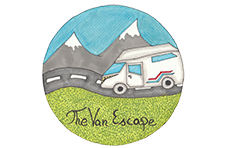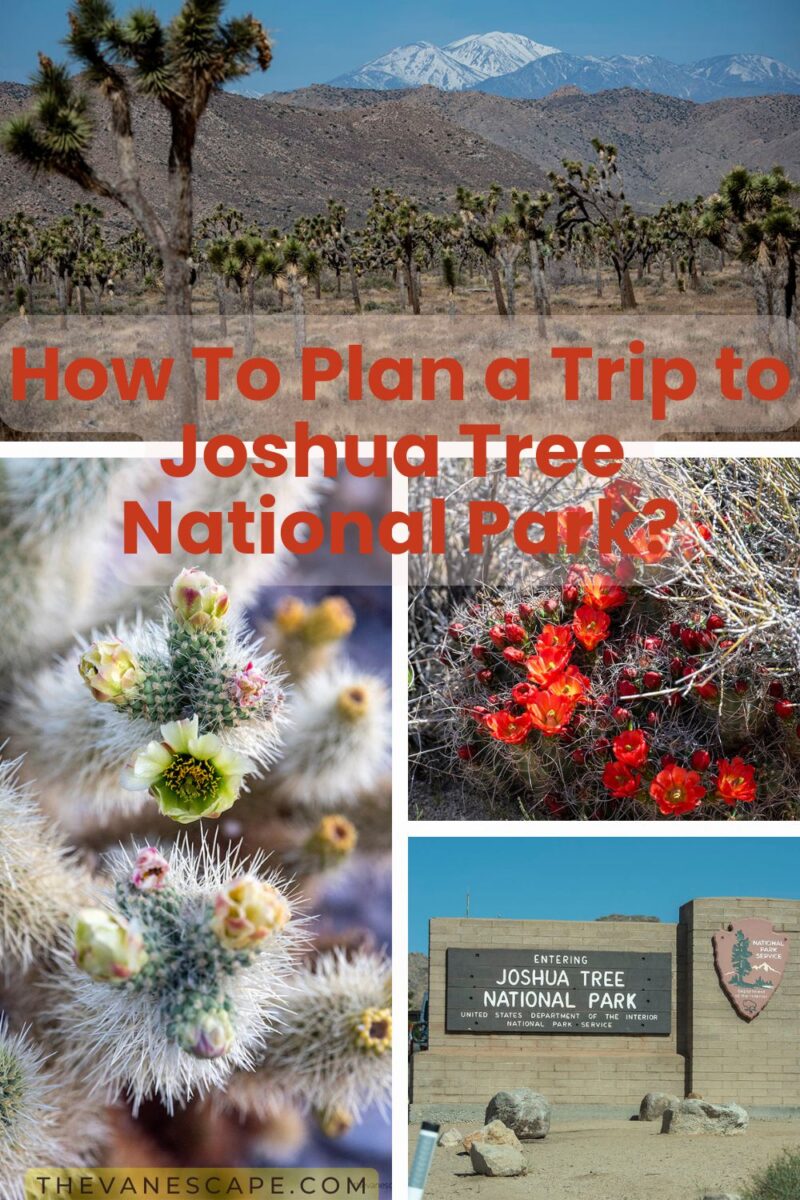Tips For Planning a Trip To Joshua Tree National Park
Planning a trip to Joshua Tree National Park? You’re in for an adventure. This guide will help you make the most of your visit, from knowing the best time to go to what to pack. Joshua Tree has stunning landscapes, unique wildlife, and clear desert skies. But to truly enjoy it, you need to be prepared. In this article, we’ll share practical tips based on firsthand experience. You’ll learn how to get to the park, how to get around once you’re there, and what to do to stay safe. We’ll also cover the best places to stay and eat, so you can relax and enjoy your trip. Whether you have one day or a full weekend, these tips will help you plan the perfect Joshua Tree experience.
This article may contain affiliate / compensated links. For full information, please see our disclaimer here.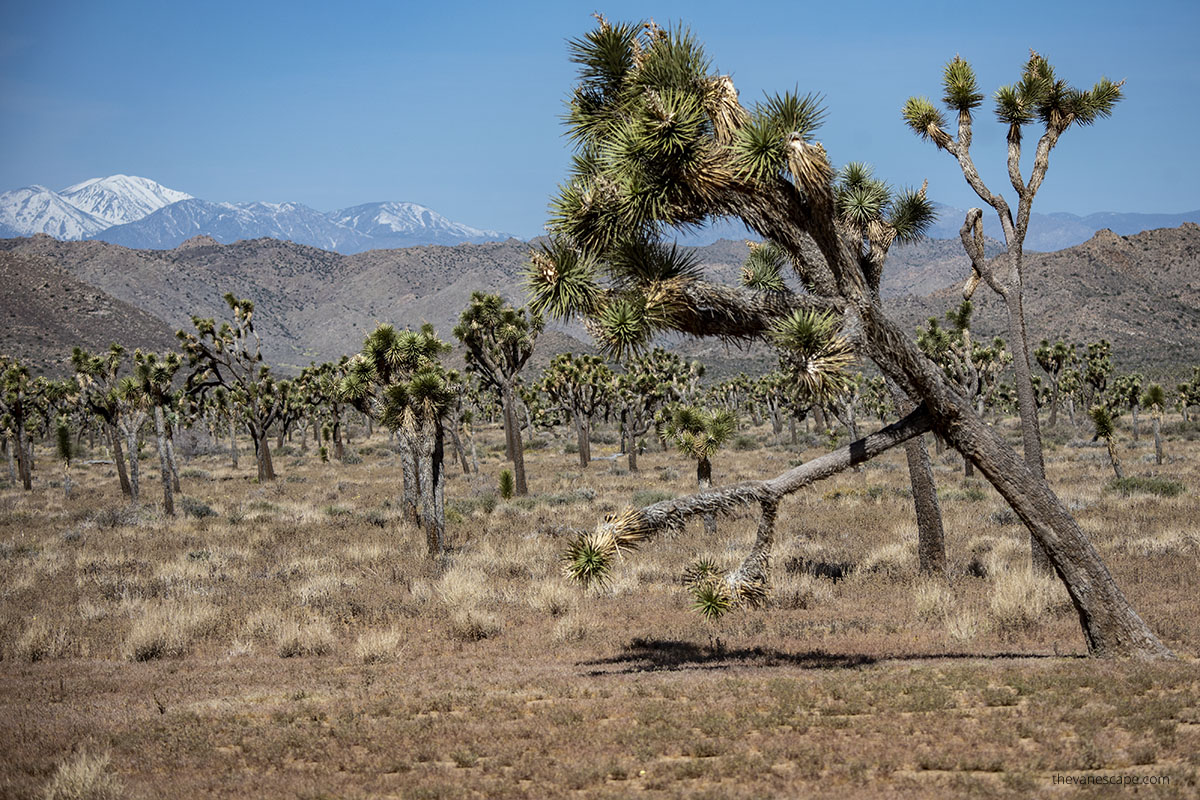
Is Joshua Tree Worth Visiting?
Absolutely. Joshua Tree National Park is a unique California destination where two deserts meet, creating a landscape unlike any other. The park is famous for its twisted Joshua trees, massive boulders, and star-filled skies. But to truly appreciate its beauty and avoid common pitfalls, planning is essential.
Without proper planning, you might miss out on the best experiences or find yourself unprepared for the desert’s harsh conditions. Joshua Tree can be incredibly hot during the day and surprisingly cold at night. Knowing when to visit, what to bring, and how to navigate the park will make your trip more enjoyable and stress-free.
Planning also helps you make the most of your time. Whether you have just one day or several, having a plan ensures you see the park’s highlights without feeling rushed. With its stunning hikes, scenic drives, and opportunities for stargazing, Joshua Tree offers so much more when you know what to expect.
In this guide, we’ll cover everything you need to know to plan the perfect visit. From getting there to staying safe, we’ve got you covered. Your trip to Joshua Tree can be an unforgettable adventure, but it starts with good planning.
Our Tip: We have also detailed list of the best things to do in Joshua Tree National Park, so check it to find what interest you most. We also camped in this stunning park, so you might be interested in camping in Joshua Tree. Also, make sure to visit the official park website to check current conditions.
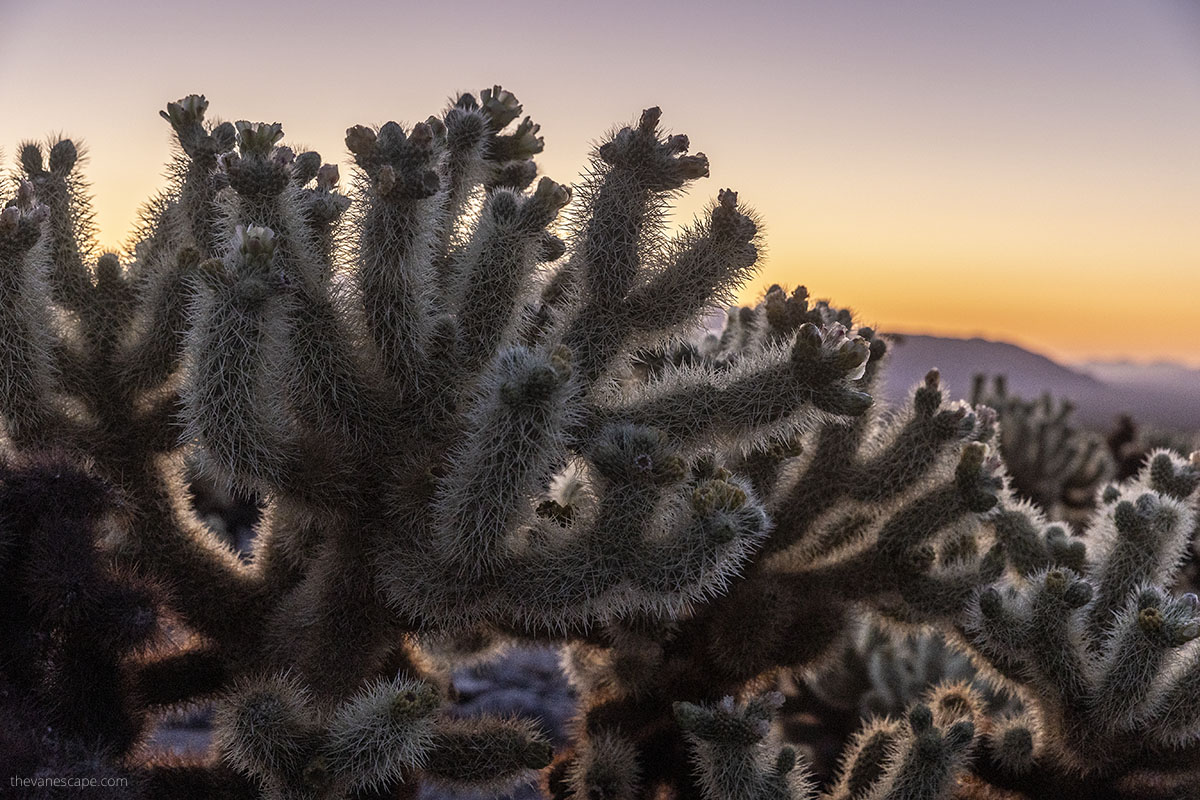
Planning a Trip To Joshua Tree National Park: Our Experiences
Chris and I love deserts, and we’ve spent years exploring some of the most remote and challenging desert landscapes in the Southwest. Our passion for these arid, rugged environments has taken us to Joshua Tree National Park many times.
We’ve discovered the best things to do in Joshua Tree, from wandering through the Cholla Cactus Garden to stepping back in time at historic Pioneertown.
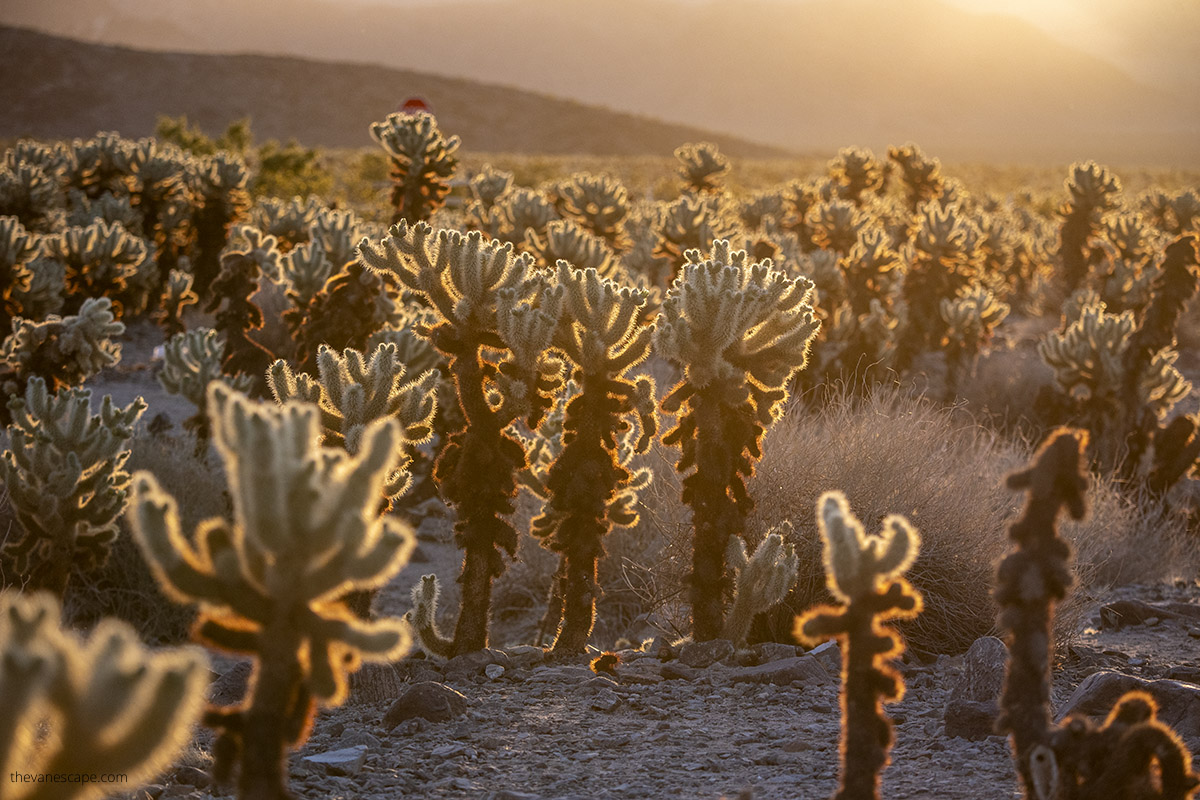
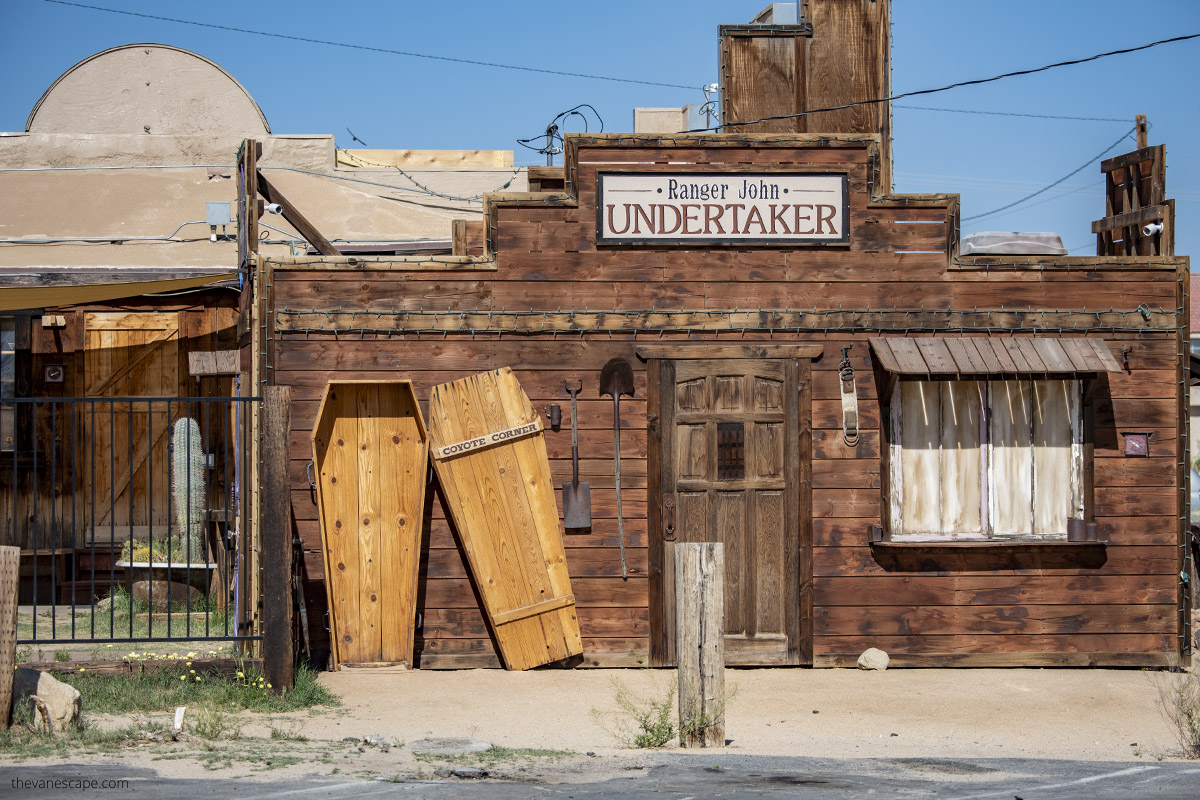
We’re also big fans of cacti, and we’ve explored Saguaro National Park during the blooming season multiple times. We also enjoed cacti in Picacho Peak State Park.
As we love desert environment we are experienced with those areas. We’ve braved the extreme heat of Death Valley National Park, trekked through the iconic landscapes of Monument Valley, The Wave, and hiked both the South Rim and North Rim of the Grand Canyon.
Our adventures also include hiking the deep dunes of White Sands National Park and many more deserted areas in the Southwest. We explored also unique Alvord Desert in Oregon, and many more. But our desert experience goes even further, beyond the US.
With this extensive experience, we know how crucial it is to be well-prepared when exploring Joshua Tree. It’s a desert. Whether it’s understanding the challenges of the desert climate, knowing what to pack, or identifying the best routes to take, our tips come from real-world experience.
We’re here to help you make the most of your visit to Joshua Tree, ensuring you’re prepared for an unforgettable desert adventure.
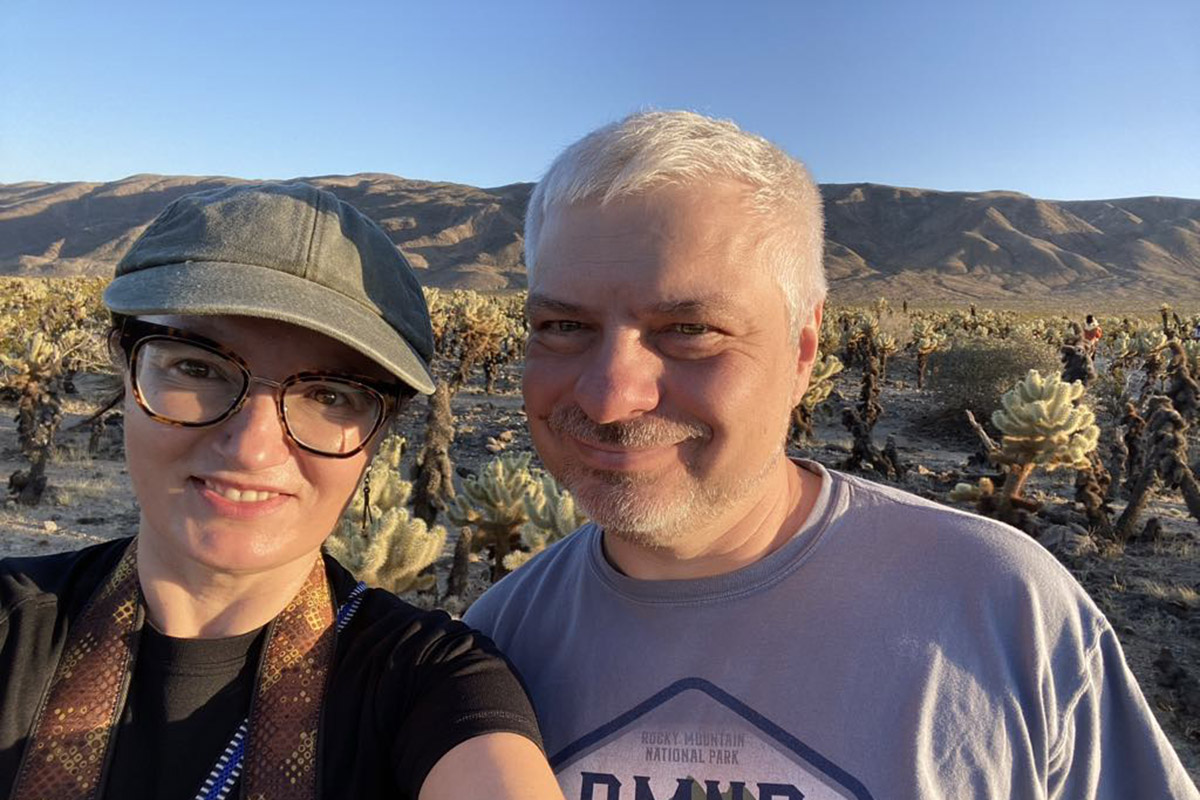
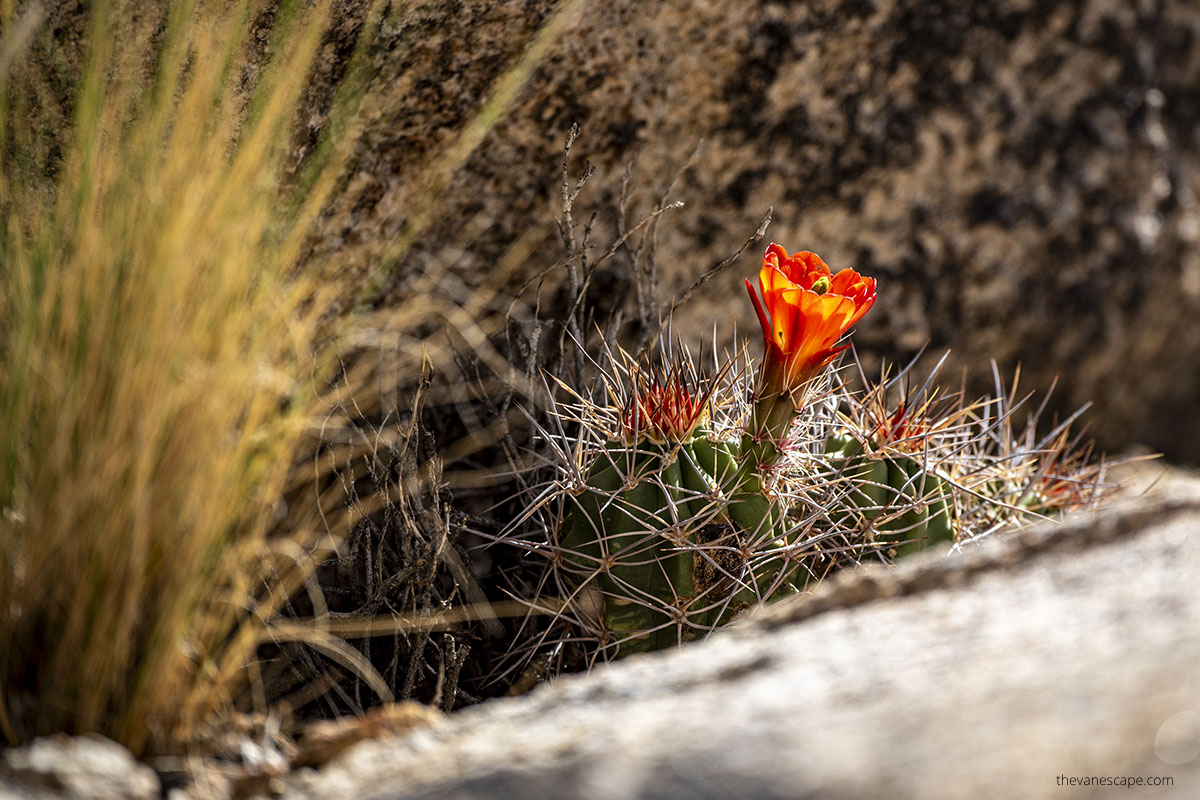
When is The Best Time to Visit Joshua Tree National Park?
The best time to visit Joshua Tree National Park is in the spring when the desert comes alive with vibrant wildflowers and cacti in bloom. This season offers comfortable temperatures and stunning scenery, making it the most popular time for visitors.
Fall and winter are also excellent, with cooler weather perfect for hiking, camping, and rock climbing. While summer can be scorching, early mornings and evenings still offer opportunities for stargazing and scenic drives. Planning your visit during these cooler months will ensure a more enjoyable experience in the park.
Spring (March to May)
Spring is one of the most popular times to visit Joshua Tree. The desert comes alive with wildflowers, and temperatures range from the 70s to 80s°F during the day. This is peak season, especially from mid-March to early May, so expect larger crowds at the park’s most famous spots. If you’re a fan of cacti, this is the best time to see them bloom.
Our Tip: Arrive early in the morning to avoid the midday rush, and consider visiting during weekdays for a more peaceful experience.
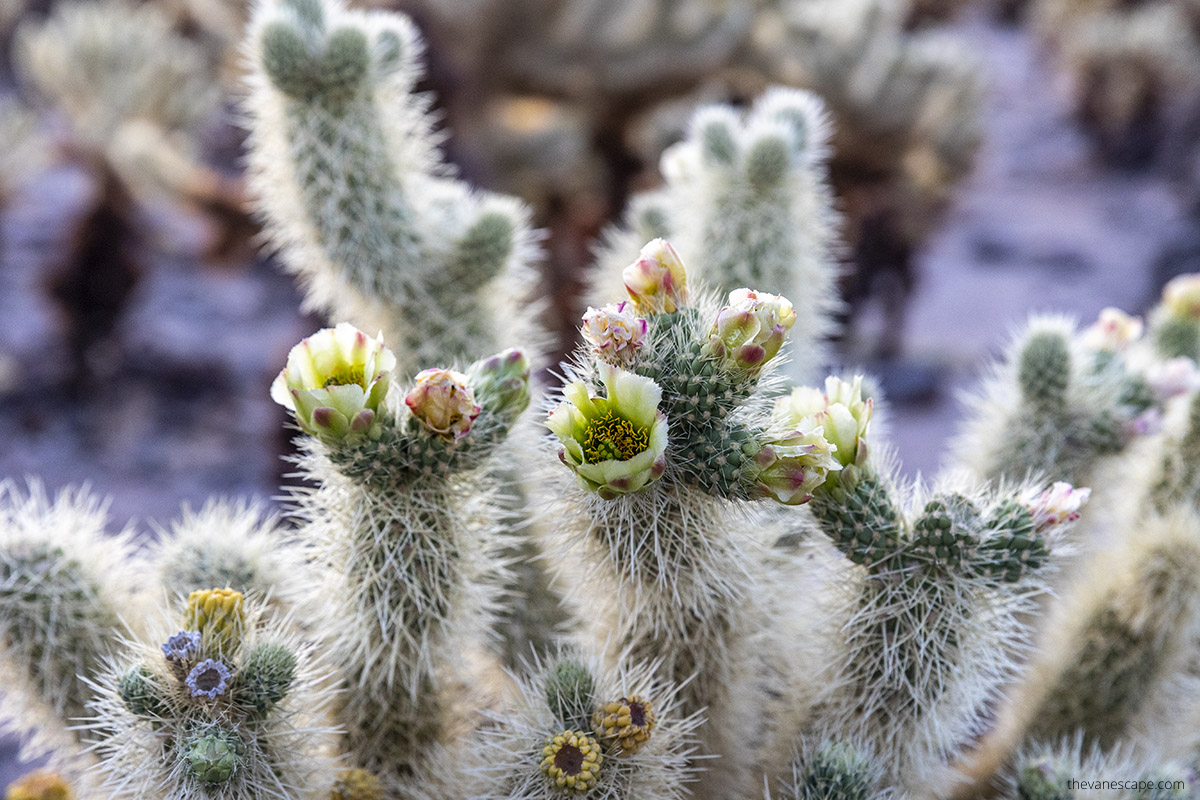
Summer (June to August)
Summer in Joshua Tree can be extremely hot, with temperatures often exceeding 100°F. This season is less ideal for outdoor activities, especially during the day. However, if you visit in the early morning or late evening, you can still enjoy some of the park’s beauty. Stargazing and night photography are popular in the summer, thanks to the clear desert skies.
Our Tip: If you visit during the summer, focus on activities like scenic drives and evening stargazing, and always carry plenty of water.
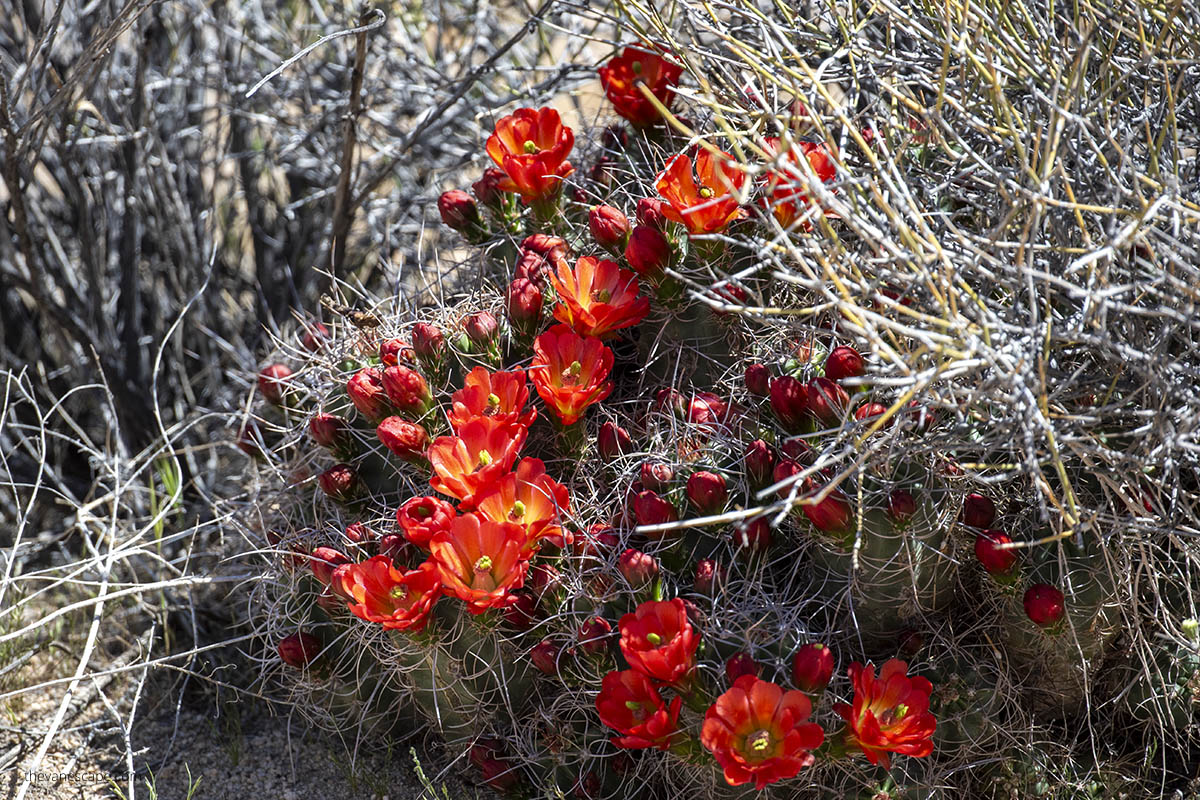
Fall (September to November)
Fall is an ideal time to visit, with temperatures starting to cool down after the intense summer heat. Daytime highs are typically in the 70s to 80s°F, while evenings are cooler, making it perfect for camping, hiking, and stargazing. The park is less crowded than in spring, so you can enjoy a more peaceful experience.
Our Tip: Early fall (September to October) is especially pleasant, with mild weather and fewer visitors, giving you plenty of space to explore popular spots like Hidden Valley and Skull Rock.
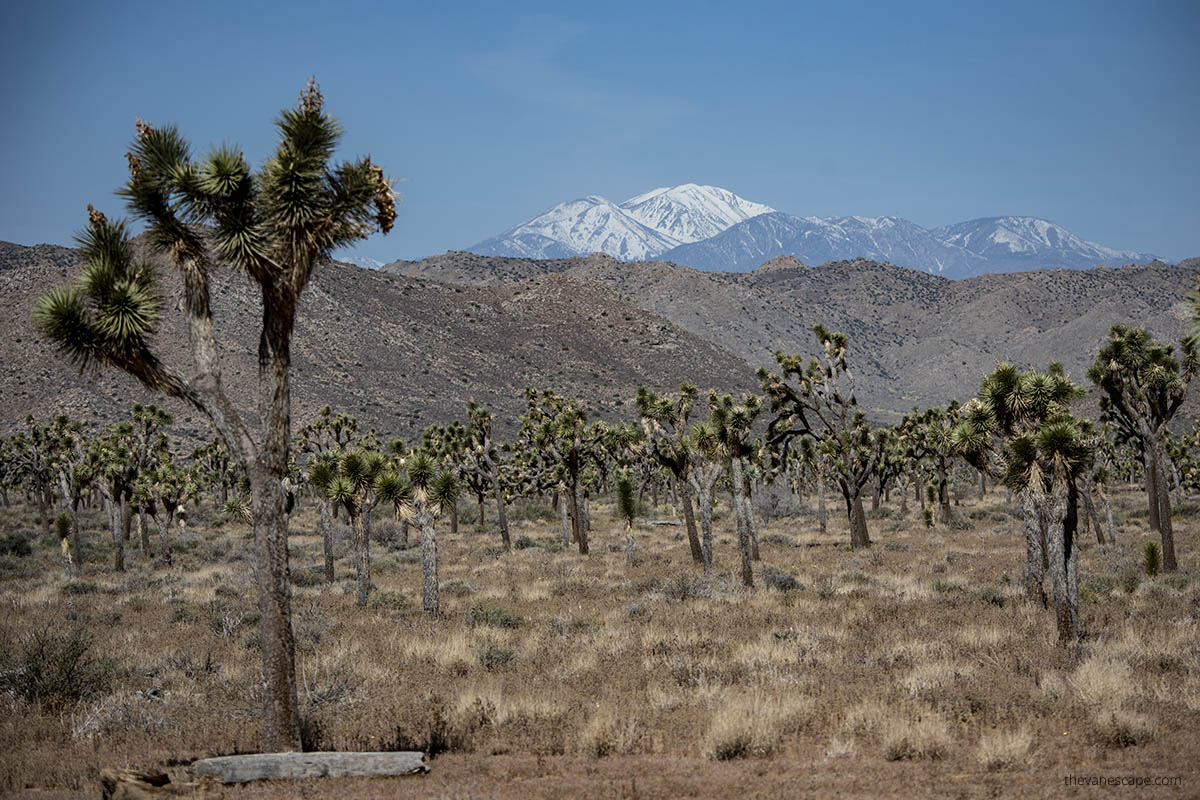
Winter (December to February)
Winter is another great time to visit Joshua Tree. While daytime temperatures hover around 60°F, nights can get chilly, often dropping below freezing. Winter is the best season for rock climbing, as the cooler weather makes it easier to tackle the park’s famous boulder routes. It’s also a fantastic time for photography, with crisp air and clear skies.
Our Tip: Pack layers for warmth, especially if you plan to camp overnight. Winter mornings are often chilly, but the park’s quieter atmosphere is worth it.
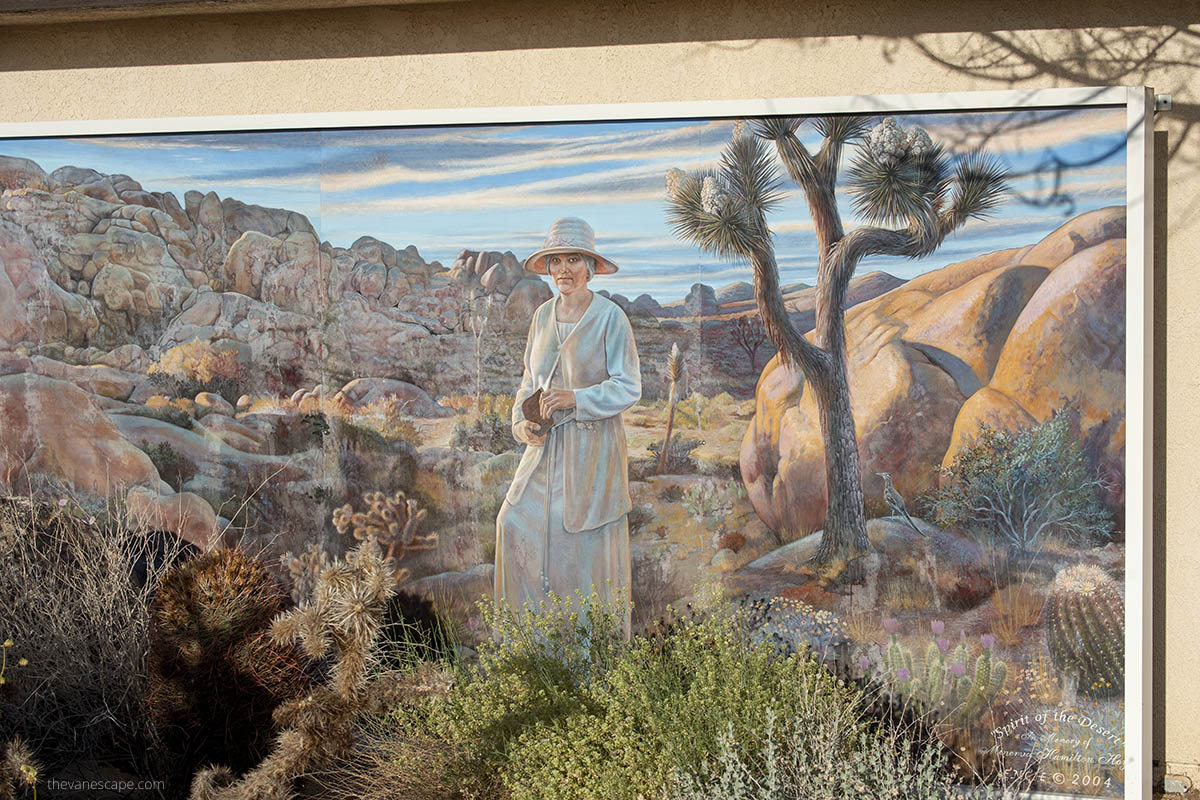
How to Get to Joshua Tree National Park?
Getting to Joshua Tree National Park is fairly straightforward, whether you’re coming from nearby cities or traveling from further afield. The park is located in Southern California and is accessible from several major highways. Here’s a guide on how to reach Joshua Tree and the best routes to take.
From Los Angeles
Joshua Tree National Park is about a 3-hour drive from Los Angeles, depending on traffic. The most common route is to take I-10 East towards Palm Springs and then switch to CA-62 East (Twentynine Palms Highway). This route takes you directly to the park’s West Entrance near the town of Joshua Tree.
Our Tip: If you have extra time, consider a scenic detour through the Coachella Valley on your way to the park.
From San Diego
The drive from San Diego to Joshua Tree takes about 2.5 to 3 hours. Start by taking I-15 North, then connect to I-215 North, and finally merge onto I-10 East. From there, follow the same route via CA-62 East as you would if coming from Los Angeles. This route takes you past several desert towns and offers a smooth drive to the park.
From Palm Springs
If you’re staying in Palm Springs, you’re just about an hour away from Joshua Tree. The quickest route is to take CA-62 East directly from Palm Springs. This drive is short but scenic, offering a glimpse of the desert’s beauty as you approach the park.
From Las Vegas
Joshua Tree is around a 3 to 4-hour drive from Las Vegas. The most common route is to take I-15 South to Barstow, then take CA-247 South (Old Woman Springs Road) towards Yucca Valley, and finally connect to CA-62 East. This drive will take you through some remote desert areas, offering a quieter approach to the park.
Flying In
If you’re flying in from further away, the closest major airport is Palm Springs International Airport (PSP), about an hour’s drive from the park. Alternatively, you can fly into Los Angeles International Airport (LAX) or San Diego International Airport (SAN), both of which are about 2 to 3 hours from Joshua Tree by car.
Public Transportation
While driving is the most convenient way to reach Joshua Tree, public transportation options are available, although very limited. The Morongo Basin Transit Authority (MBTA) provides bus services that connect Palm Springs with Twentynine Palms and Joshua Tree. However, these services are infrequent, so it’s best to plan ahead if you’re relying on public transport.
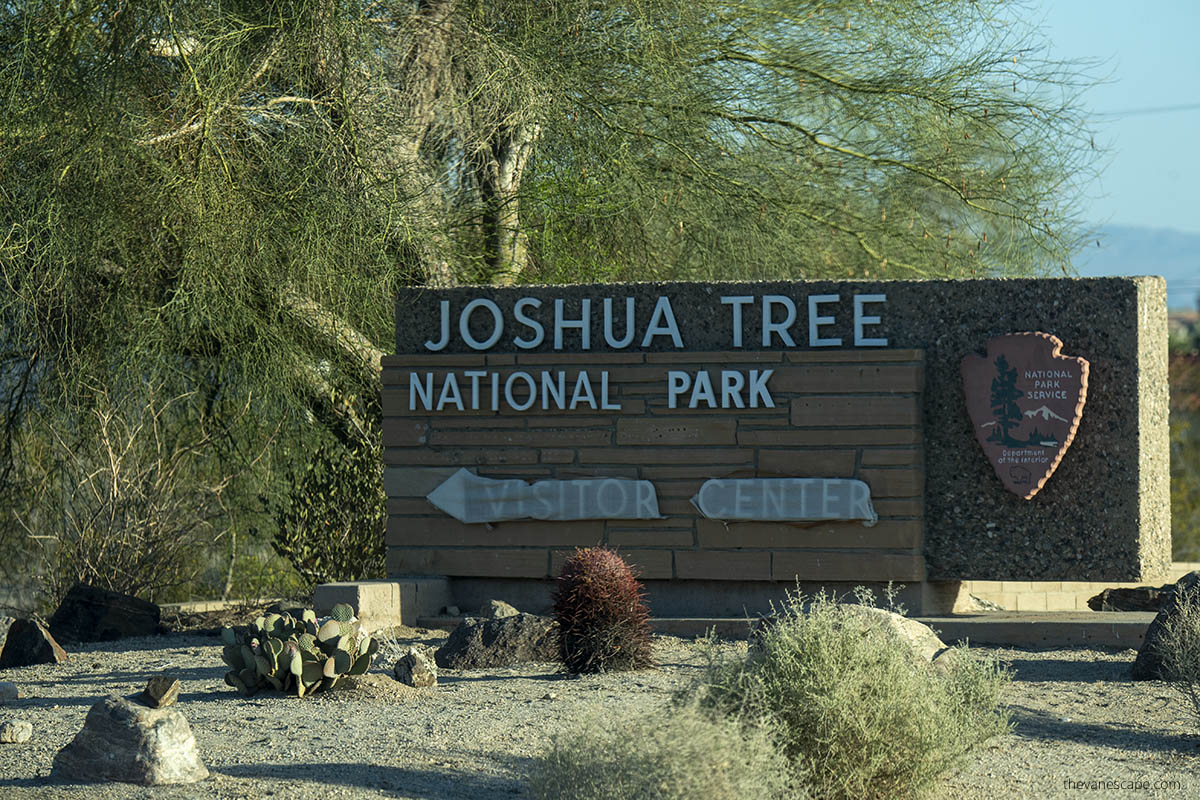
Park Entrances and Visitor Centers
Joshua Tree National Park has three main entrances, each offering a unique route into the park. Knowing the right entrance to use can save time and help you plan your day more efficiently.
West Entrance
The West Entrance is the most popular and is located near the town of Joshua Tree. It’s easily accessible from Highway 62 and is perfect if you’re coming from Palm Springs or Los Angeles. This entrance leads directly into the heart of the park, making it ideal for visiting popular spots like Hidden Valley, Skull Rock, and Keys View.
Our Tip: Arrive early to avoid long lines at this entrance, especially during weekends and holidays.
North Entrance
Located near Twentynine Palms, the North Entrance is a great alternative if you’re looking to avoid the heavier traffic at the West Entrance. This entrance also offers easy access to the park’s northern attractions and is close to the Oasis Visitor Center, which provides helpful information about the park.
Our Tip: If you’re staying in Twentynine Palms or traveling from Las Vegas, this entrance is your best option.
South Entrance
The South Entrance is the least crowded and offers a more remote experience. It’s located off Interstate 10, near the town of Cottonwood. This entrance is perfect if you’re coming from Phoenix or planning to explore the southern parts of the park, like the Cholla Cactus Garden and Cottonwood Spring.
Our Tip: The South Entrance is ideal for visitors looking for quieter areas of the park, with fewer crowds and more peaceful hikes.
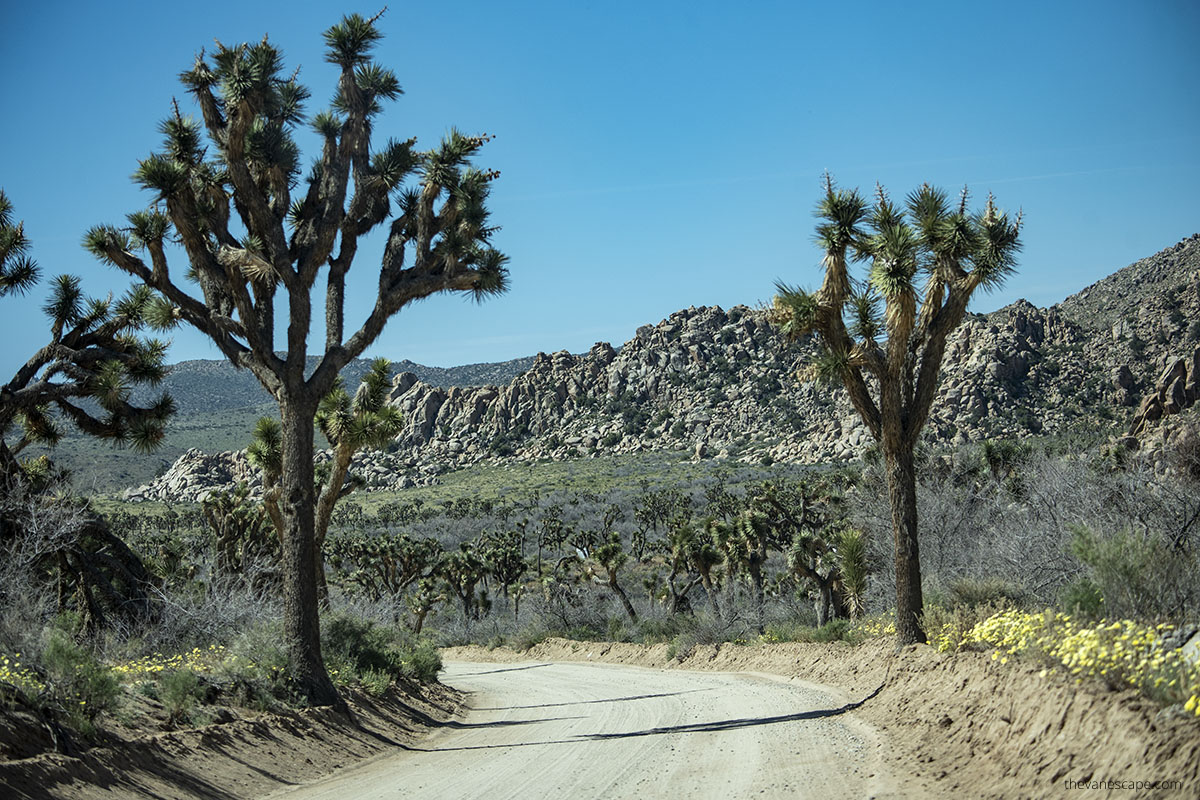
Visitor Centers
Joshua Tree National Park has four visitor centers, where you can get maps, advice from park rangers, and learn more about the area’s history and wildlife.
- Joshua Tree Visitor Center (near the West Entrance): The largest and most popular, offering exhibits, a gift shop, and ranger-led programs.
- Oasis Visitor Center (near the North Entrance): Great for getting tips on northern hikes and learning about the park’s ecology.
- Cottonwood Visitor Center (near the South Entrance): Provides information on southern hikes and is less crowded, perfect for a quieter visit.
- Black Rock Nature Center (in Black Rock Campground): Smaller and more remote, offering information on hiking and camping.
Our Tip: Stop by one of the visitor centers to get the latest updates on trail conditions, wildlife sightings, and ranger-led programs.
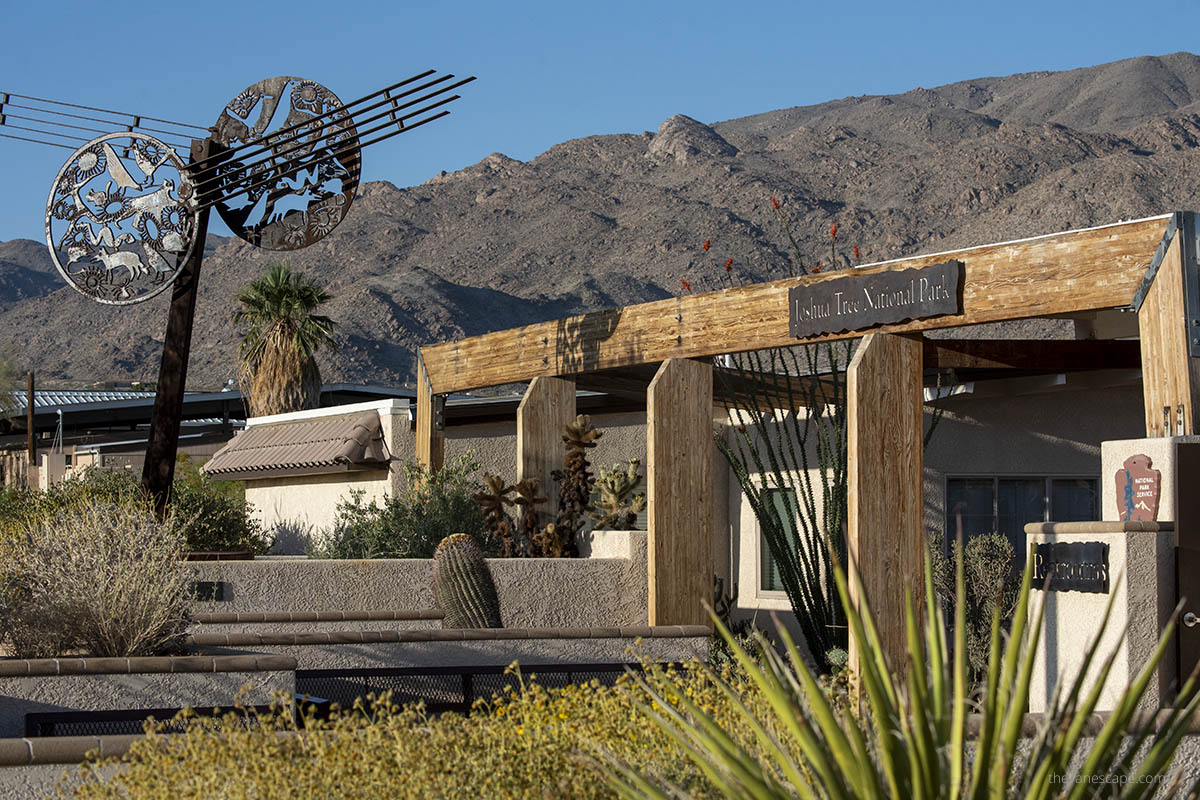
How to Get Around Joshua Tree National Park?
Joshua Tree National Park is vast, covering over 1,200 square miles, and getting around efficiently is key to making the most of your visit. Whether you’re driving, biking, or hiking, here’s how to navigate the park’s landscapes and reach its top attractions.
Driving in Joshua Tree
Driving is the most convenient way to explore Joshua Tree National Park. The park has three main entrances: the West Entrance near the town of Joshua Tree, the North Entrance near Twentynine Palms, and the South Entrance off I-10. Once inside, the main roads that connect the park’s attractions are well-maintained, and most are accessible by standard vehicles.
Key Roads to Know:
- Park Boulevard: This is the main artery of the park, connecting the West Entrance to the North Entrance. It takes you past major sites like Hidden Valley, Skull Rock, and Keys View.
- Pinto Basin Road: This road runs through the southern part of the park, leading to the Cholla Cactus Garden, Ocotillo Patch, and Cottonwood Spring.
Our Tip: The speed limit in the park is generally 35 mph, so take your time and enjoy the scenery. Also, be aware that parking can fill up quickly at popular spots, especially on weekends and holidays.
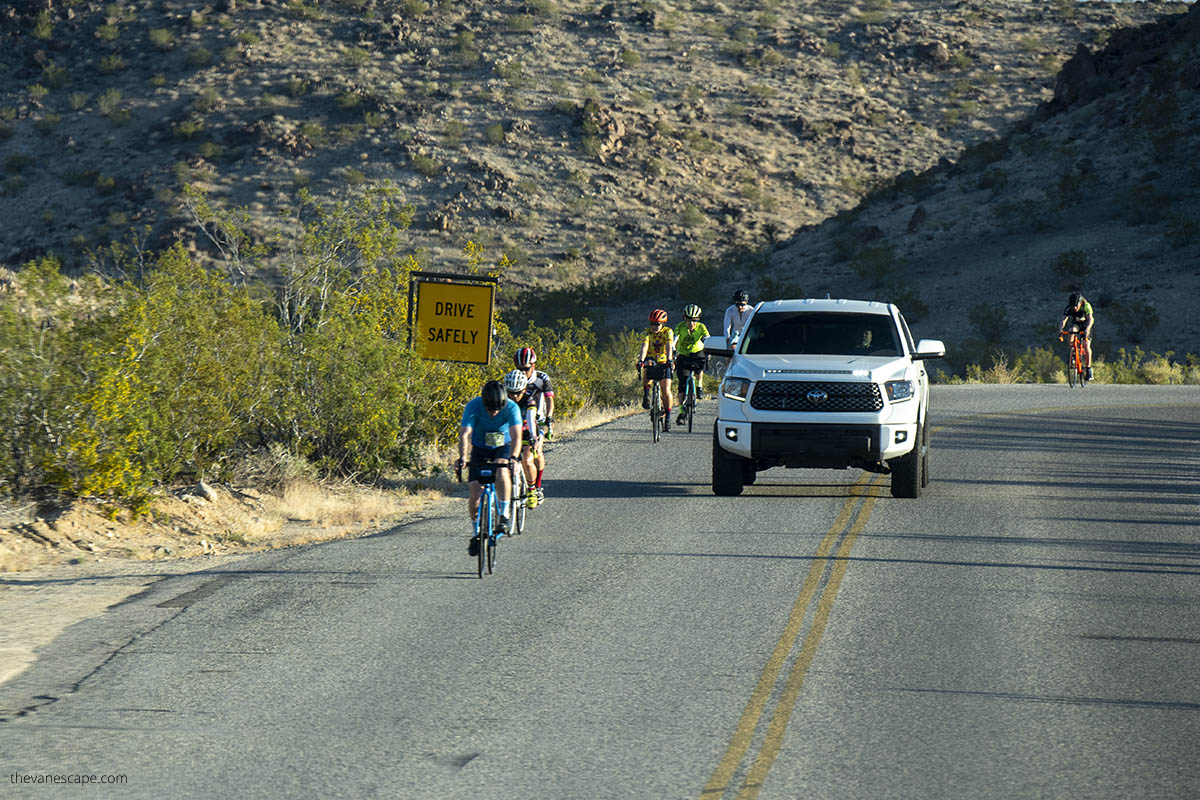
Biking
Biking is a great way to explore Joshua Tree National Park, especially in cooler months. While there are no designated bike trails within the park, cyclists can use the same paved roads as vehicles. The terrain can be challenging, with some steep grades and sharp turns, so it’s best suited for experienced cyclists.
Our Tip: Bring plenty of water, as there are no water sources available along most biking routes, and always wear a helmet.
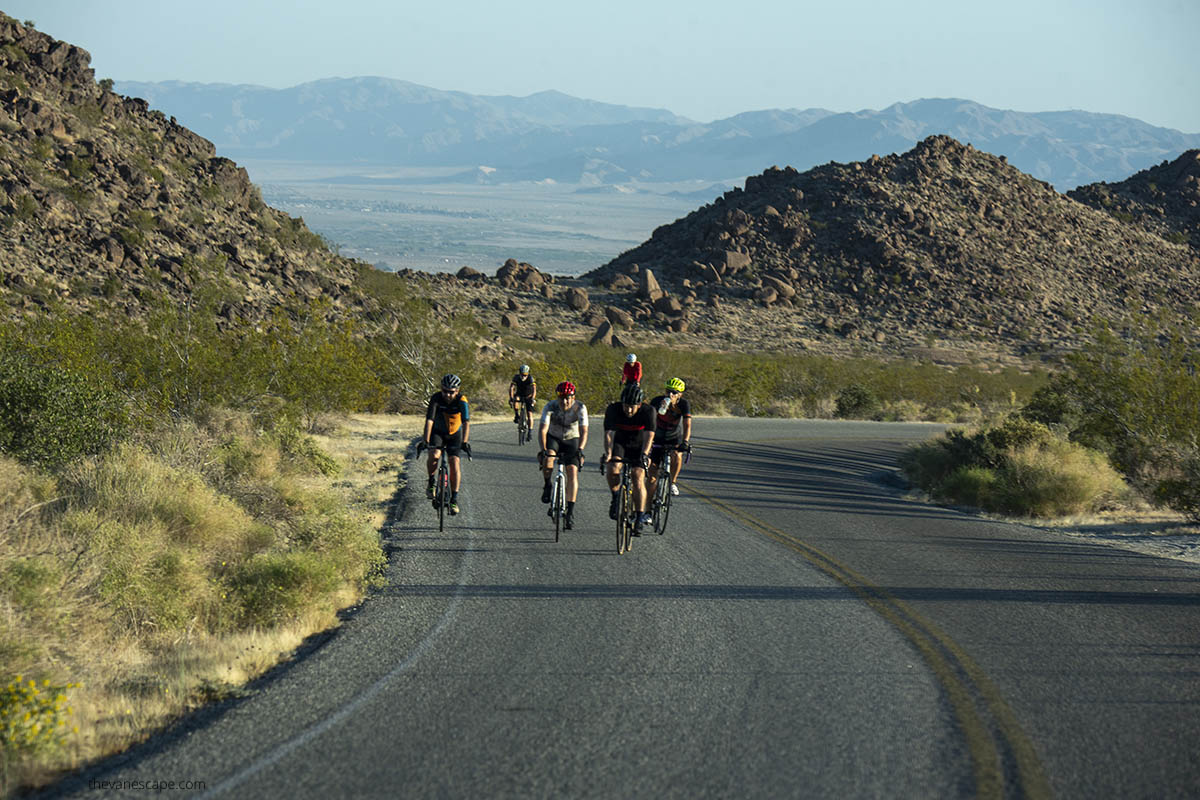
Hiking
Hiking is one of the best ways to experience Joshua Tree’s natural beauty. The park offers a variety of trails, ranging from easy nature walks to strenuous hikes. Popular trails like Barker Dam, Hidden Valley, and the Ryan Mountain Trail can be accessed directly from the main roads, with parking available at most trailheads.
Our Tip: Always carry a map or use a GPS device, as cell service is limited in the park. Stick to marked trails to protect the fragile desert ecosystem and avoid getting lost.
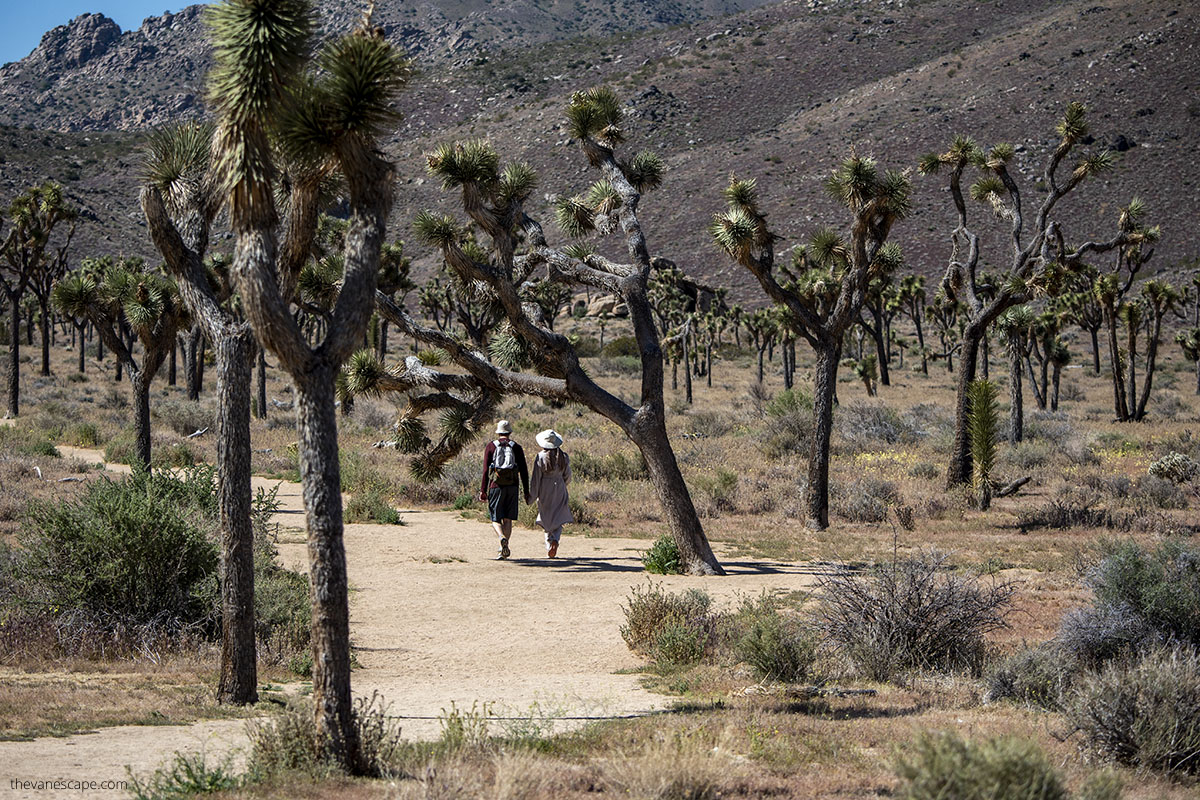
Public Transportation
Joshua Tree National Park doesn’t offer internal shuttle services, so public transportation options within the park are limited. However, the Morongo Basin Transit Authority (MBTA) provides bus services to and from the nearby towns of Joshua Tree, Twentynine Palms, and Yucca Valley. This is a viable option if you’re staying outside the park and don’t have a vehicle, but once inside, you’ll need to rely on hiking or biking to get around.
Accessibility
The park has made efforts to improve accessibility for visitors with disabilities. Some trails, such as the Oasis of Mara and parts of the Barker Dam Trail, are wheelchair accessible. Additionally, all visitor centers are equipped with accessible parking and restrooms.
Our Tip: For visitors with mobility challenges, the paved scenic drives offer excellent opportunities to enjoy the park’s landscapes from the comfort of your vehicle.
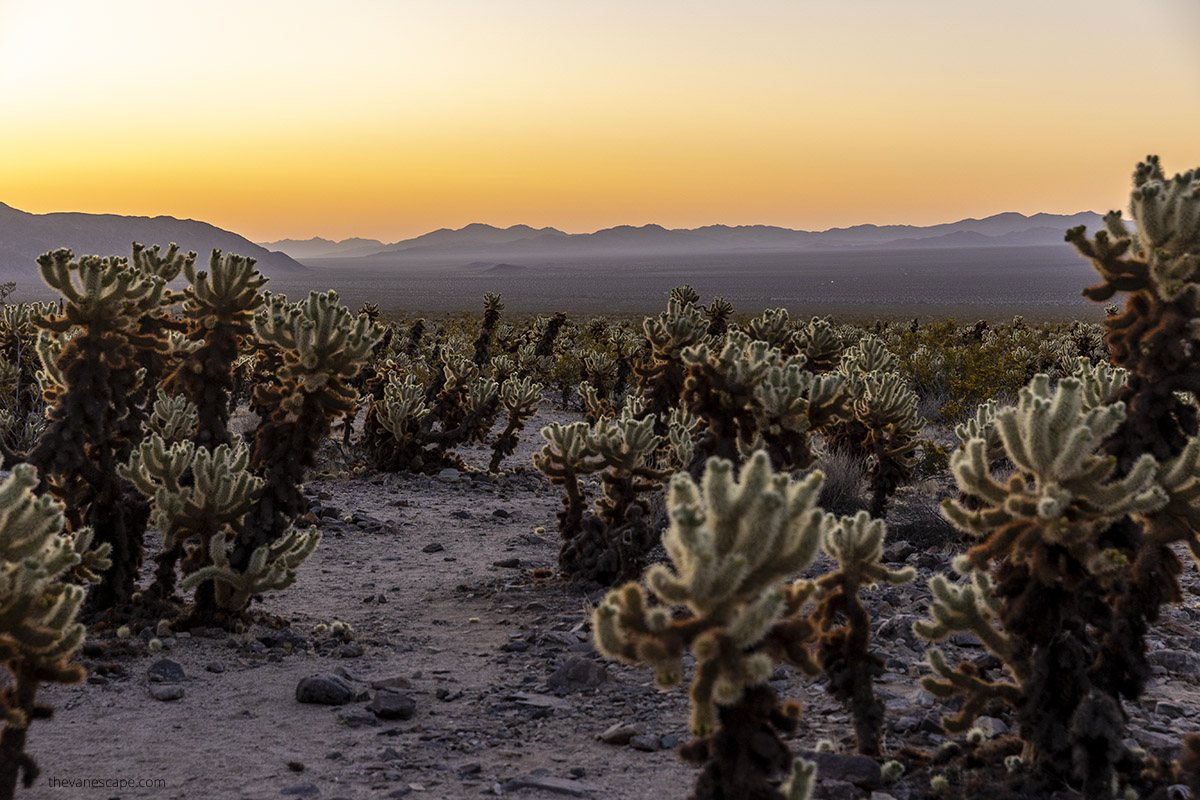
How Many Days to Spend in Joshua Tree National Park?
The number of days you should spend in Joshua Tree depends on how much you want to explore and what activities interest you. Make sure to check our detailed list with the best activities and attractions in Joshua Tree. Here’s a breakdown to help you plan your trip:
One Day in Joshua Tree
If you only have one day in Joshua Tree, focus on the park’s highlights. You can drive through the park, stopping at key spots like Hidden Valley, Skull Rock, and Keys View. Include a short hike, such as Barker Dam or the easy Hidden Valley loop, to experience the beauty of the desert up close.
Our Tip: For a more complete experience, plan to catch the sunrise or sunset at the Cholla Cactus Garden or Keys View.
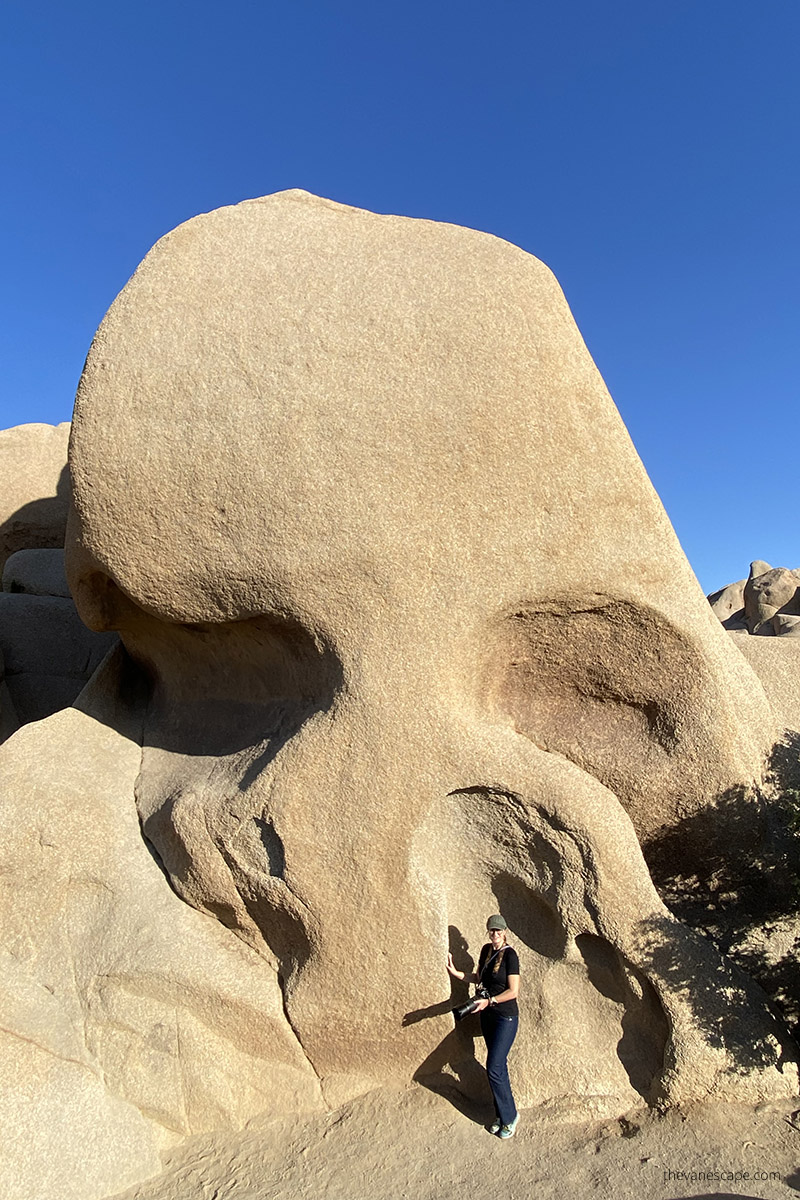
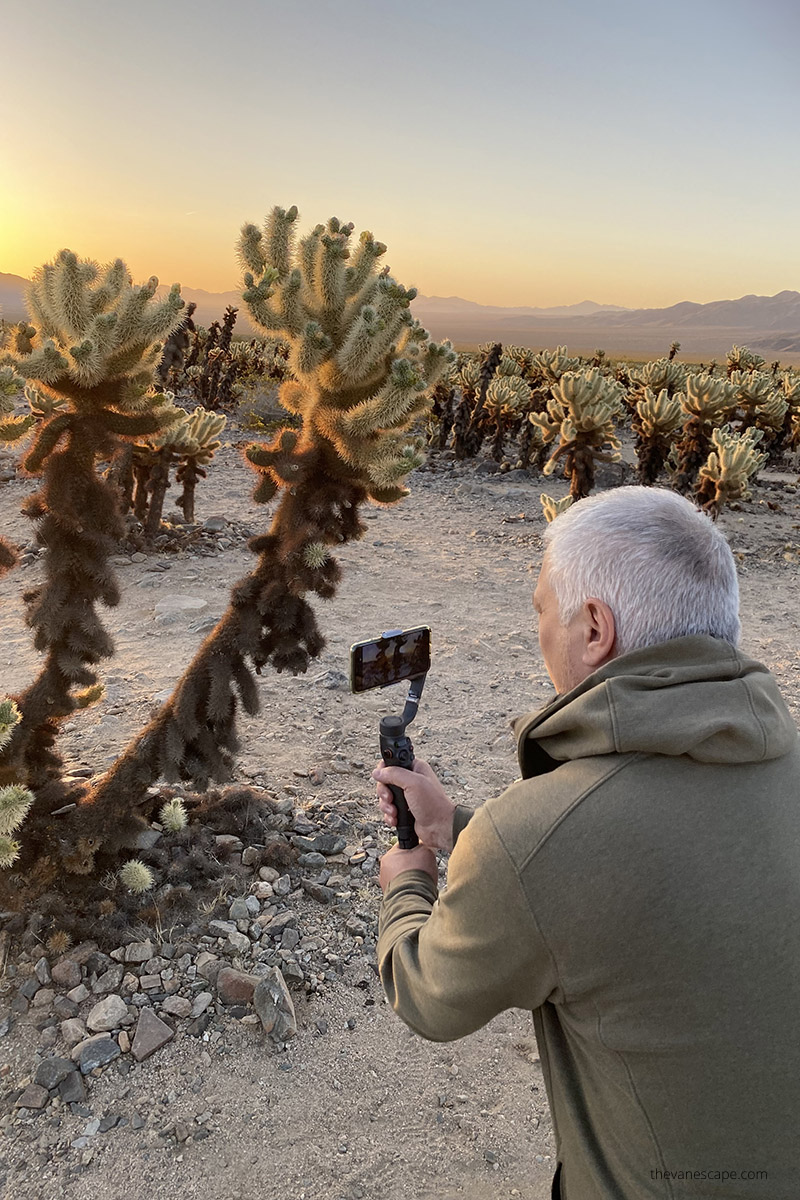
Two Days in Joshua Tree
With two days, you can dive deeper into the park’s attractions. On the first day, follow the one-day itinerary, hitting the main sights and taking a few short hikes. On the second day, explore longer trails like Ryan Mountain for panoramic views or Lost Palms Oasis for a unique desert hike to a hidden oasis. You’ll also have time to enjoy rock climbing or stargazing in the evening.
Our Tip: Spend the night in the park at one of its campgrounds to fully experience Joshua Tree’s incredible night skies.
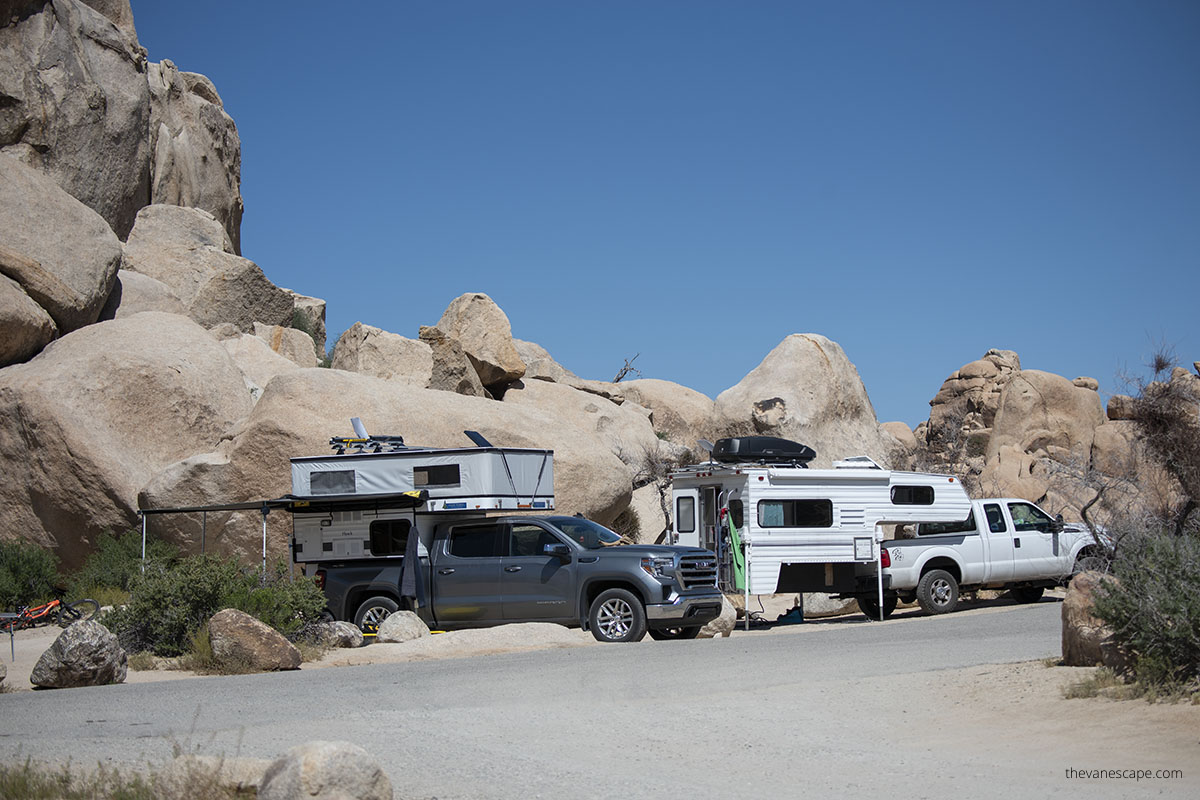
Three Days or More
If you have three days or more, you can really immerse yourself in the park. In addition to the must-see spots and longer hikes, consider visiting lesser-known areas like the Wall Street Mill or Indian Cove. You’ll also have time to relax and explore nearby attractions, such as the historic Pioneertown or take a scenic drive through the Pinto Basin.
You can mix in some photography, more rock climbing, or even venture to Joshua Tree’s backcountry for solitude and adventure.
Our Tip: Spread out your activities to avoid rushing, and take the time to soak in the desert’s peaceful atmosphere.
For most visitors, two to three days is the perfect amount of time to explore Joshua Tree National Park. If you’re a hiker, climber, or photographer, a longer stay will allow you to fully appreciate everything this remarkable desert landscape has to offer.
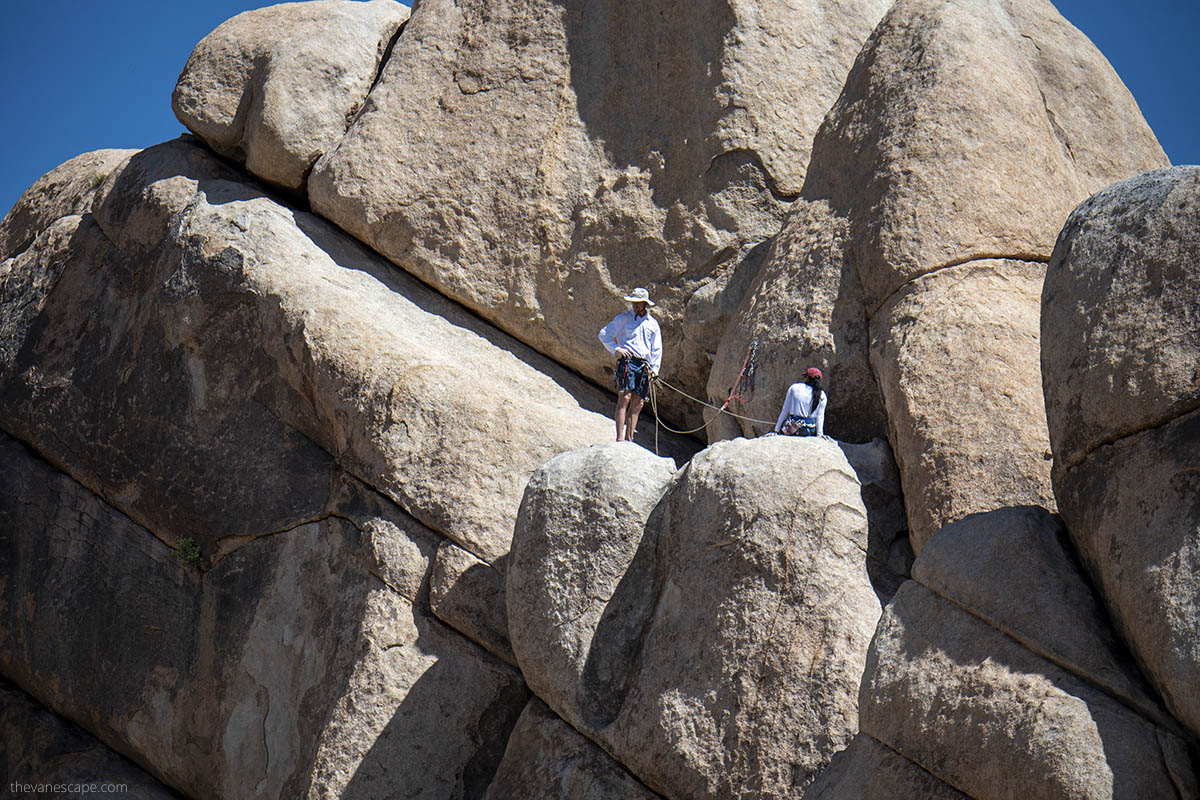
Safety Tips for Visiting Joshua Tree
Joshua Tree National Park is a beautiful but rugged desert environment, and being prepared is key to staying safe. Here are some essential safety tips to help you enjoy your visit while minimizing risks.
Stay Hydrated
The desert climate in Joshua Tree can be extremely dry, especially during the hotter months. It’s easy to become dehydrated without realizing it. Always carry plenty of water—at least one gallon per person per day. If you’re hiking, bring extra water, and drink regularly, even if you don’t feel thirsty.
Our Tip: Start hydrating at least two days before your visit, and avoid alcohol or caffeine, which can dehydrate you.
Be Aware of Extreme Temperatures
Daytime temperatures in Joshua Tree can soar above 100°F in summer, while winter nights can drop below freezing. Always check the weather forecast and dress accordingly. In summer, plan your activities for the early morning or late evening when it’s cooler. In winter, pack layers to stay warm, especially if you’re camping overnight.
Our Tip: Avoid hiking during midday in the summer. Instead, use that time for scenic drives or exploring visitor centers.
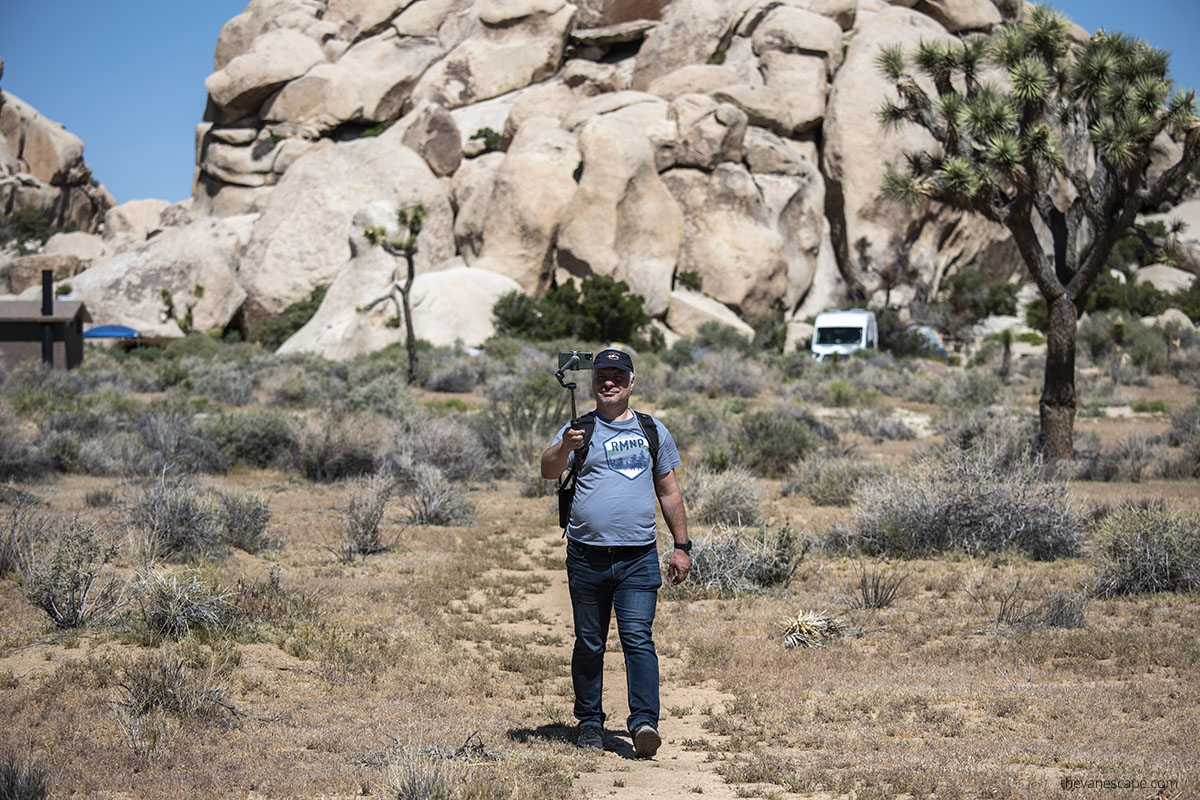
Watch Out for Wildlife
Joshua Tree is home to various animals, including snakes, scorpions, and coyotes. Most wildlife will avoid you, but it’s important to stay cautious. Never approach or feed wild animals, and always keep an eye out when hiking. If you encounter a rattlesnake, give it plenty of space and back away slowly.
Our Tip: Wear closed-toe shoes, especially if you’re exploring areas with rocks and vegetation where animals may be hiding.
Protect Yourself from the Sun
The desert sun is strong, even on cooler days. To prevent sunburn or heat-related issues, wear sunscreen with a high SPF, a wide-brimmed hat, sunglasses, and long-sleeved clothing. Reapply sunscreen throughout the day, especially if you’re sweating or hiking.
Our Tip: Seek shade whenever possible and take breaks during longer hikes to cool off.
Bring a Map and Know Your Route
Cell reception is limited in Joshua Tree, so don’t rely on GPS or your phone for directions. Bring a physical map of the park and familiarize yourself with your planned route before heading out. It’s easy to get disoriented, especially in the more remote areas of the park.
Our Tip: Stop by a visitor center to pick up a map and ask rangers for trail conditions and tips before starting your hike.
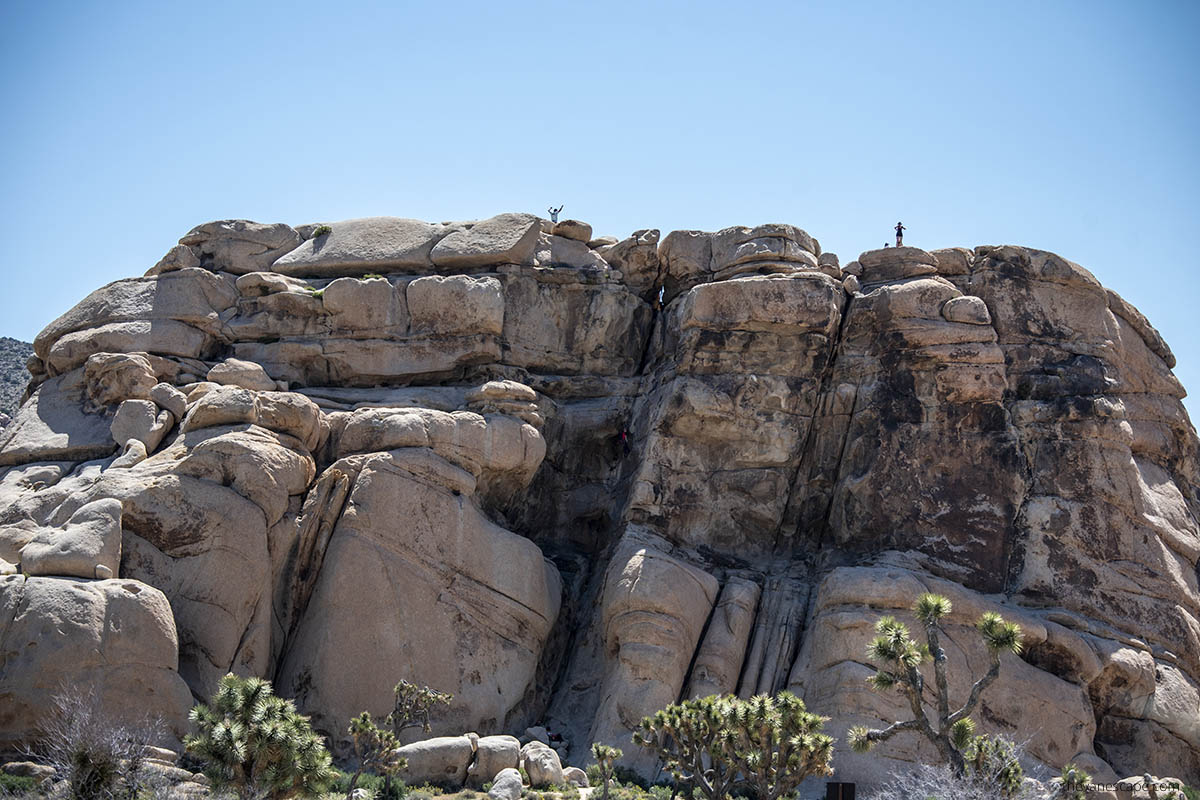
Leave No Trace
Joshua Tree’s desert ecosystem is fragile. Help protect it by following Leave No Trace principles: pack out all trash, stay on marked trails, and avoid disturbing plants and wildlife. Human impact on the desert environment can last for years, so it’s essential to minimize your footprint.
Our Tip: Carry a small trash bag in your backpack and clean up after yourself, even in remote areas.
Prepare for Emergencies
If you’re planning to hike or camp, let someone know your plans, including your intended route and when you expect to return. This is especially important because cell service can be unreliable. Bring a basic first aid kit and know how to use it. Additionally, check your vehicle’s gas level before entering the park, as gas stations are far apart.
Our Tip: Keep a fully charged phone with you, but don’t depend on it as your primary safety tool.
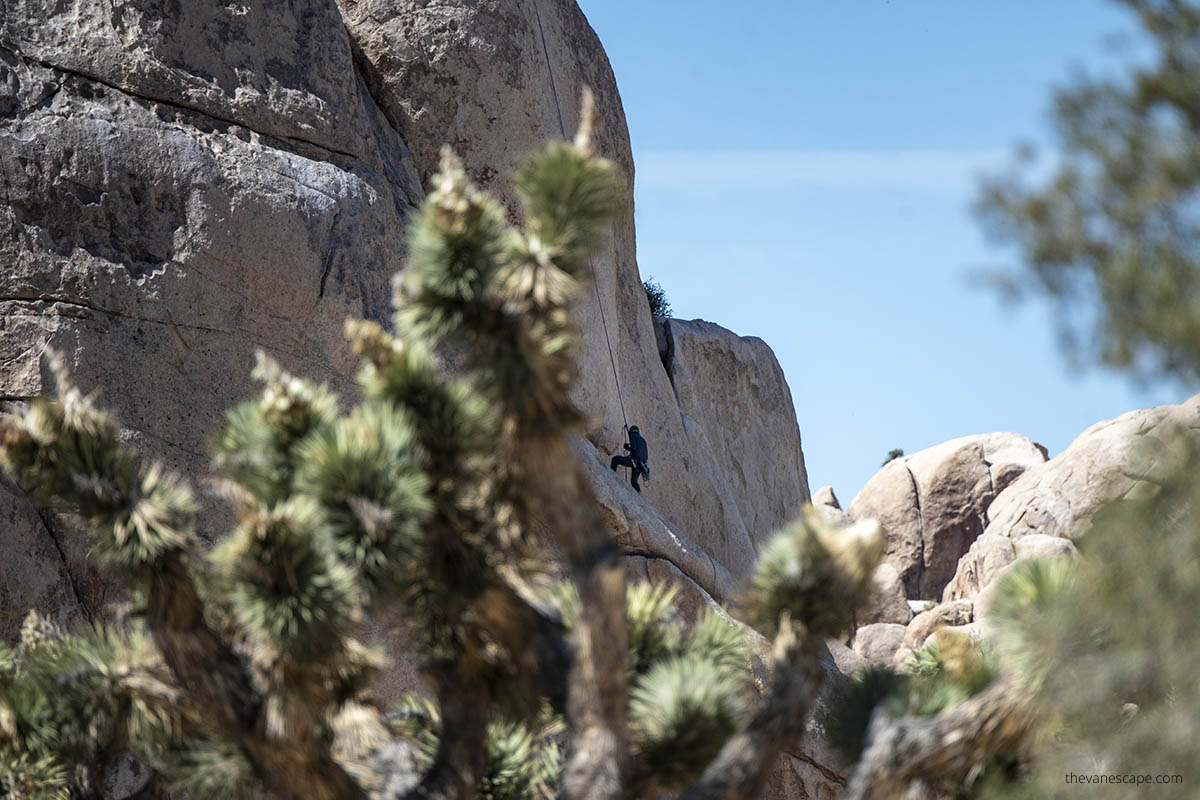
What to Pack for Joshua Tree National Park?
Packing the right gear for Joshua Tree National Park is crucial for a safe and enjoyable visit. The desert environment can be harsh, with extreme temperatures, rugged terrain, and limited amenities, so being well-prepared will make a big difference. Here’s a comprehensive list of essentials to bring.
Water and Hydration Gear
Water is the most important item you’ll need in Joshua Tree. The dry desert air can dehydrate you quickly, so plan to bring at least one gallon of water per person per day. For hikes, a reusable water bottle or hydration pack is ideal for carrying enough water with you.
Our Tip: Bring electrolyte packets to help replenish minerals lost through sweating.
Sun Protection
The desert sun is intense, even on cooler days. Be sure to pack:
- Sunscreen (high SPF) to protect your skin from harmful UV rays.
- A wide-brimmed hat for shade and sun protection.
- Sunglasses with UV protection to shield your eyes from the bright sunlight.
- Lightweight, long-sleeved clothing to protect your skin while keeping cool.
Our Tip: Reapply sunscreen throughout the day, especially if you’re sweating during a hike.
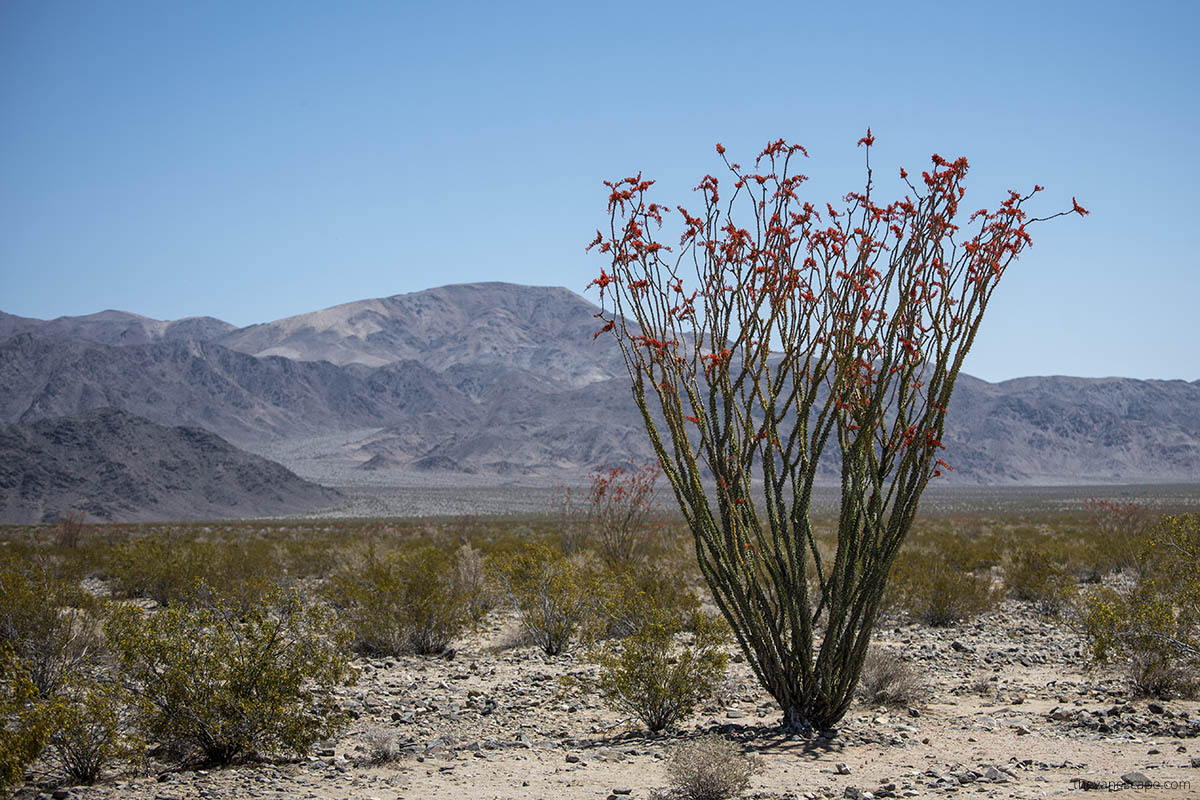
Proper Footwear
Whether you’re hiking or just exploring the park, the terrain in Joshua Tree can be rocky and uneven. Sturdy footwear is essential:
- Hiking boots with good ankle support and grip for tackling the rocky trails.
- Comfortable walking shoes for easier paths or scenic drives.
Our Tip: Break in your hiking boots before your trip to avoid blisters.
Layers for Changing Temperatures
Desert temperatures can fluctuate drastically, with hot days and cool nights, especially in the winter. Be prepared by bringing:
- A warm jacket or fleece for chilly mornings and evenings.
- Light layers that can be easily added or removed throughout the day.
Navigation Tools
Since cell service is limited in many parts of the park, don’t rely on your phone’s GPS. Especially if you plan hiking. Instead, pack:
- A detailed map of the park (available at visitor centers).
- A compass or GPS device for navigating the park’s more remote areas.
Our Tip: Familiarize yourself with your planned route before setting out and always stay on marked trails.
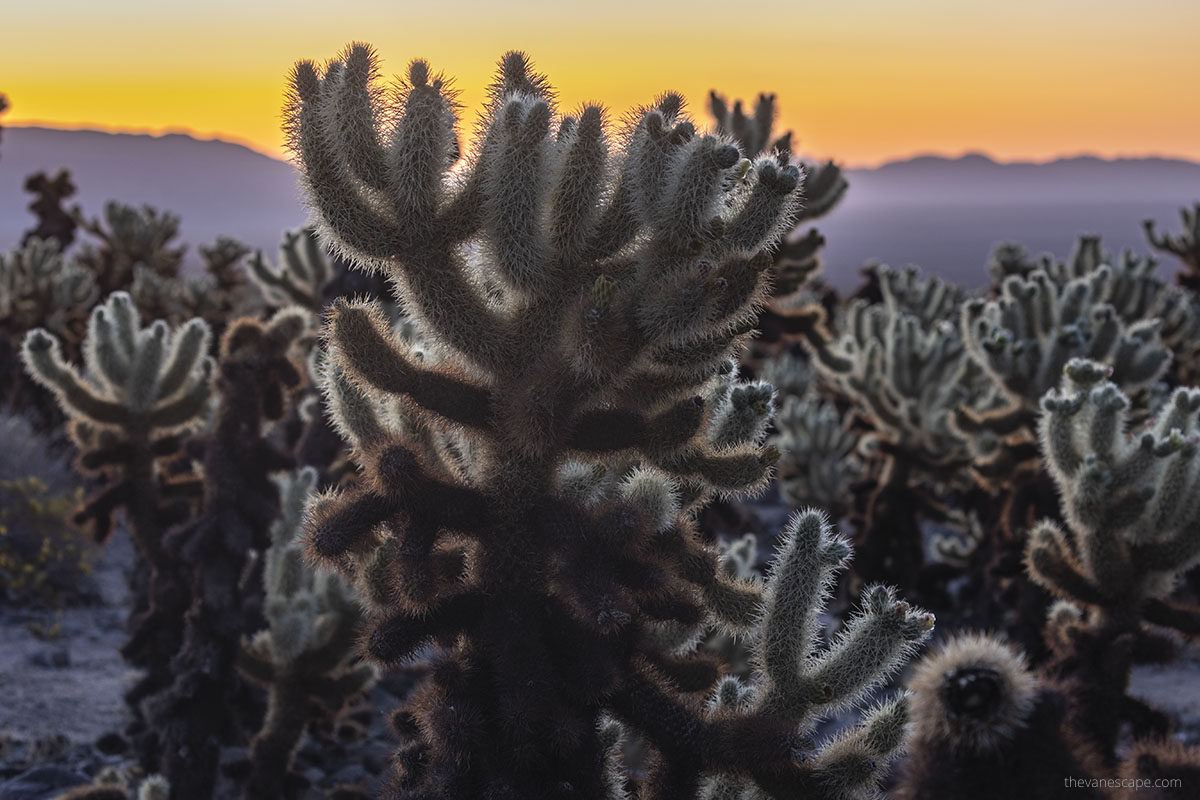
First Aid Kit
A basic first aid kit is a must-have for any desert adventure. Include items such as:
- Bandages and antiseptic wipes for cuts or scrapes.
- Tweezers for removing cactus spines or thorns.
- Pain relievers, allergy medication, and any personal medications you might need.
Our Tip: Add moleskin or blister pads for foot care during long hikes.
Snacks and Food
There are no restaurants or food options inside Joshua Tree National Park, so pack enough food for the duration of your visit. Easy-to-carry snacks like:
- Trail mix, energy bars, and dried fruit for quick energy on hikes.
- Lunch or sandwiches if you plan to spend the entire day in the park.
Our Tip: Bring a cooler with cold drinks and fresh food if you’re camping or spending multiple days in the park.
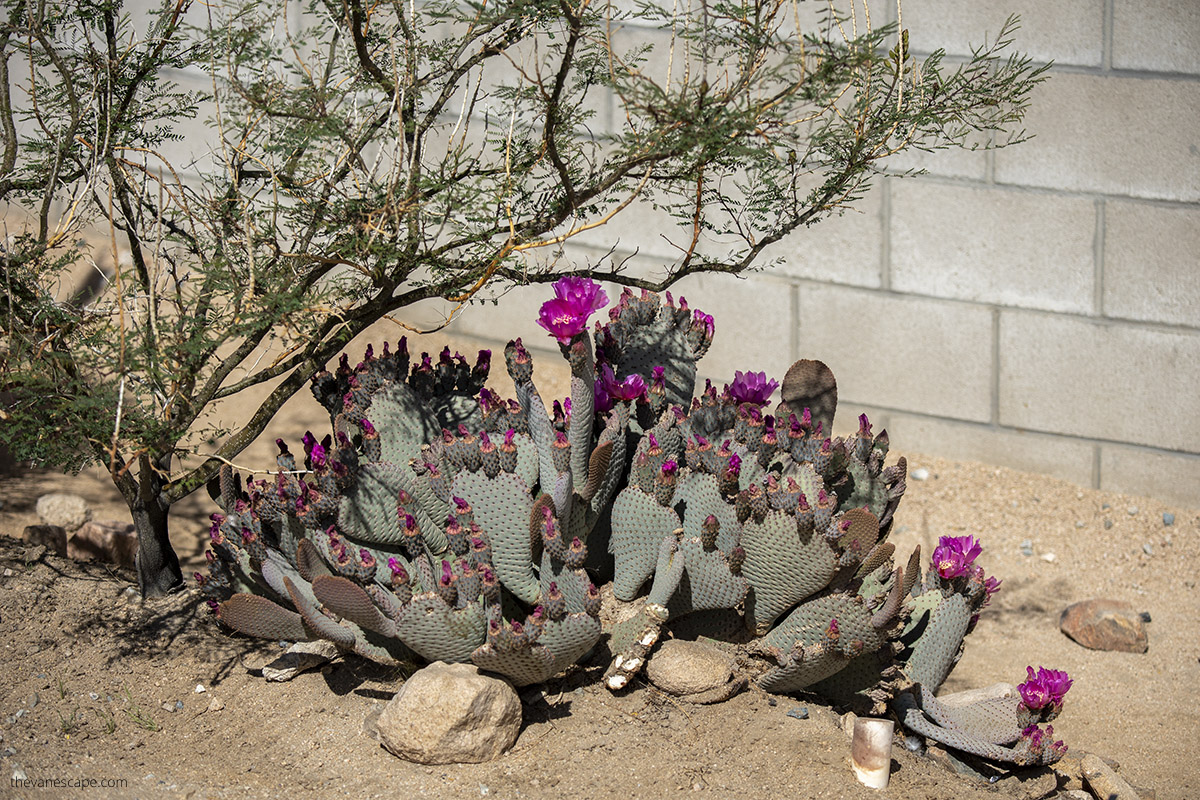
Camera and Photography Gear
Joshua Tree offers incredible photo opportunities, from its iconic Joshua trees to the vast night sky for stargazing.
- A camera with extra batteries and memory cards.
- A tripod if you plan on doing night photography or long-exposure shots.
Our Tip: Don’t forget to charge all electronics before heading into the park, as there are no charging stations.
Camping Gear (if staying overnight)
If you’re planning to camp, bring:
- A tent with stakes suited for rocky ground.
- A sleeping bag rated for cooler desert nights.
- A camp stove (no open fires allowed in the park except in designated areas).
Our Tip: Reserve your campsite early, as spots fill up quickly in popular seasons.
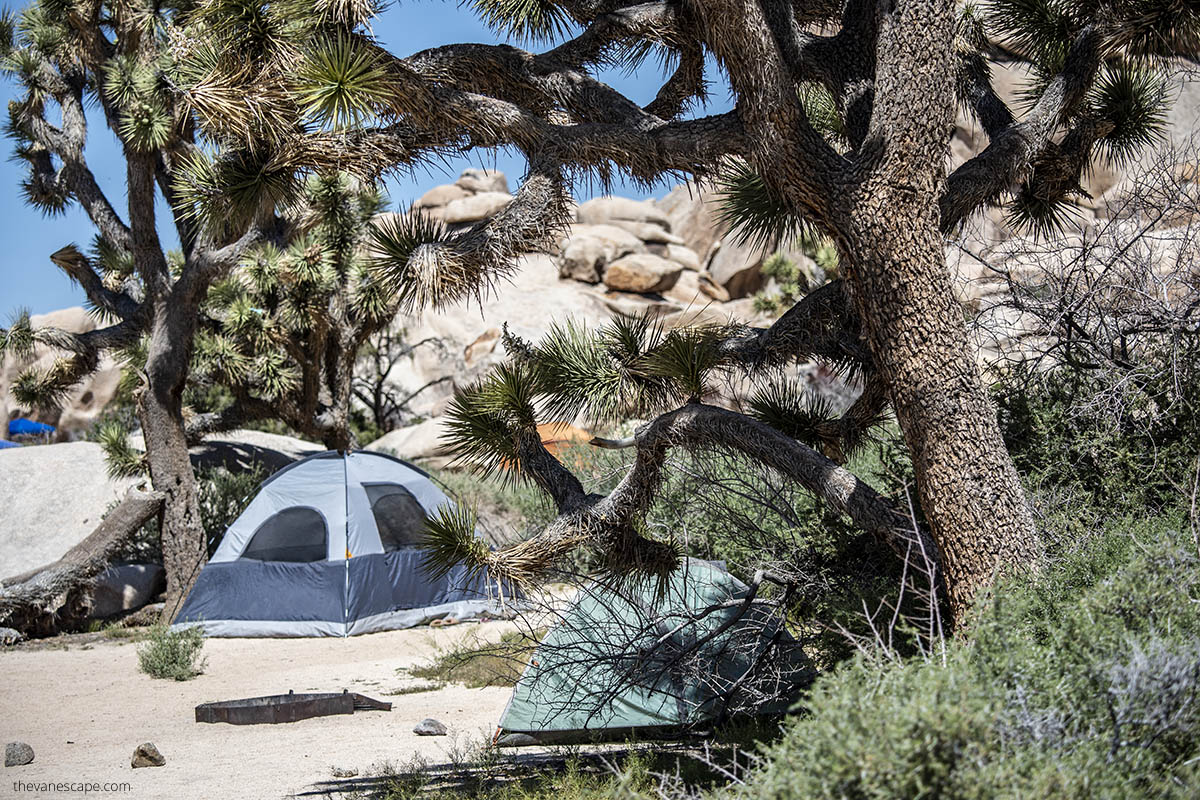
Miscellaneous Essentials
A few other key items to consider:
- Headlamp or flashlight for navigating after dark.
- Portable charger for your phone or camera.
- Binoculars for birdwatching or stargazing.
- Toiletries like hand sanitizer, wet wipes, and biodegradable soap.
Our Tip: Bring a small trash bag to pack out all of your waste, following Leave No Trace principles.
With the right gear, you’ll be fully prepared to explore Joshua Tree’s stunning landscapes safely and comfortably. Whether you’re hiking, camping, or just enjoying a scenic drive, these essentials will ensure a smooth and enjoyable trip.
Where to Stay Near Joshua Tree National Park?
Joshua Tree National Park has a range of accommodation options, whether you prefer camping under the stars or staying in a cozy retreat just outside the park. Here’s an overview to help you decide where to stay.
Camping Inside the Park
For those looking to immerse themselves in nature, camping inside Joshua Tree is a fantastic option. Popular campgrounds include Jumbo Rocks and Hidden Valley, known for their dramatic rock formations and stargazing opportunities. Ryan Campground is another great spot, close to hiking trails. Most campgrounds accept reservations during peak season, but some operate on a first-come, first-served basis.
Our Tip: Book early during spring and fall, as campgrounds fill up quickly. Check our detailed article about campgrounds in Joshua Tree National Park.
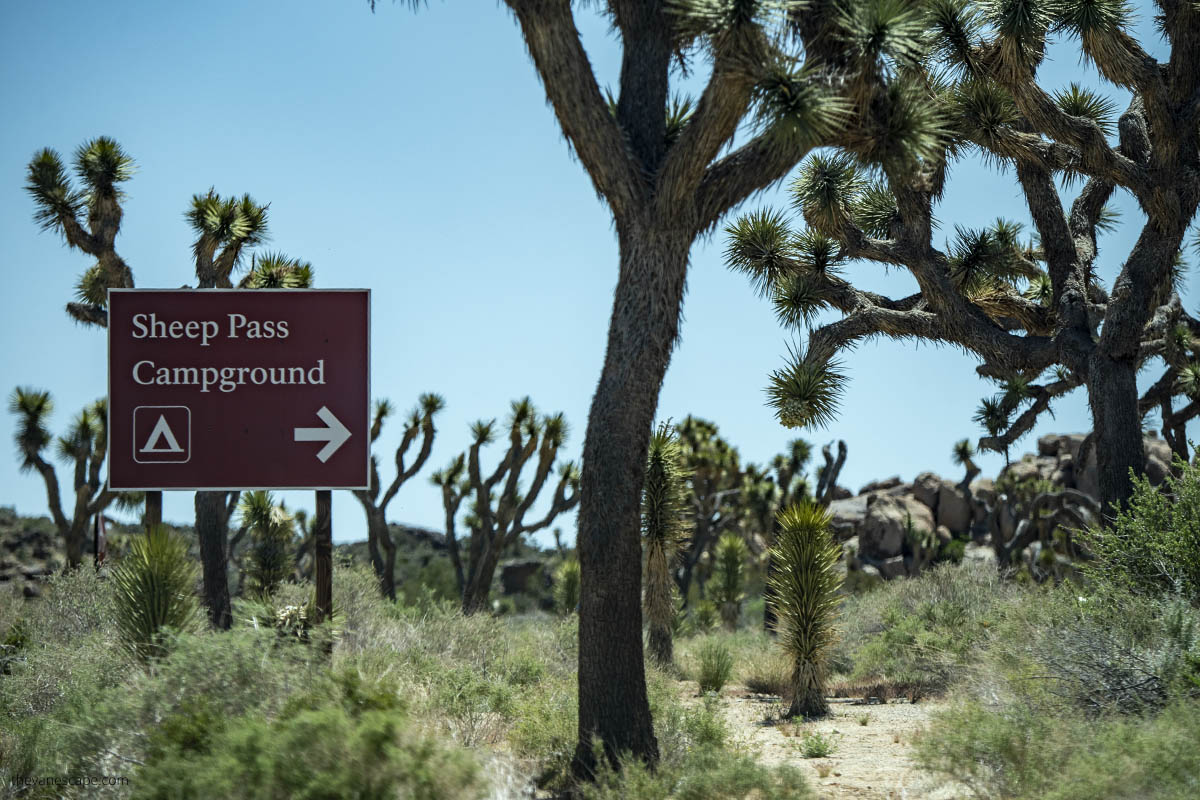
Lodging Outside the Park
If camping isn’t your preference, nearby towns like Joshua Tree, Twentynine Palms, and Palm Springs offer plenty of accommodation options.
- Joshua Tree Town: The closest town, offering charming inns and vacation rentals just minutes from the park’s West Entrance.
- Twentynine Palms: A quieter option, located near the North Entrance, with affordable motels and small hotels.
- Palm Springs: About an hour away, Palm Springs offers a more luxurious stay with upscale hotels, spas, and dining.
Unique Stays
For a one-of-a-kind experience, Joshua Tree has many unique Airbnb options and quirky stays.
- Pioneertown Motel: A charming place with a rich history, originally built as a movie set in the 1940s.
- Airbnb Options: From stylish desert cabins to secluded retreats with hot tubs and amazing views, Joshua Tree’s Airbnbs capture the creative, bohemian spirit of the desert.
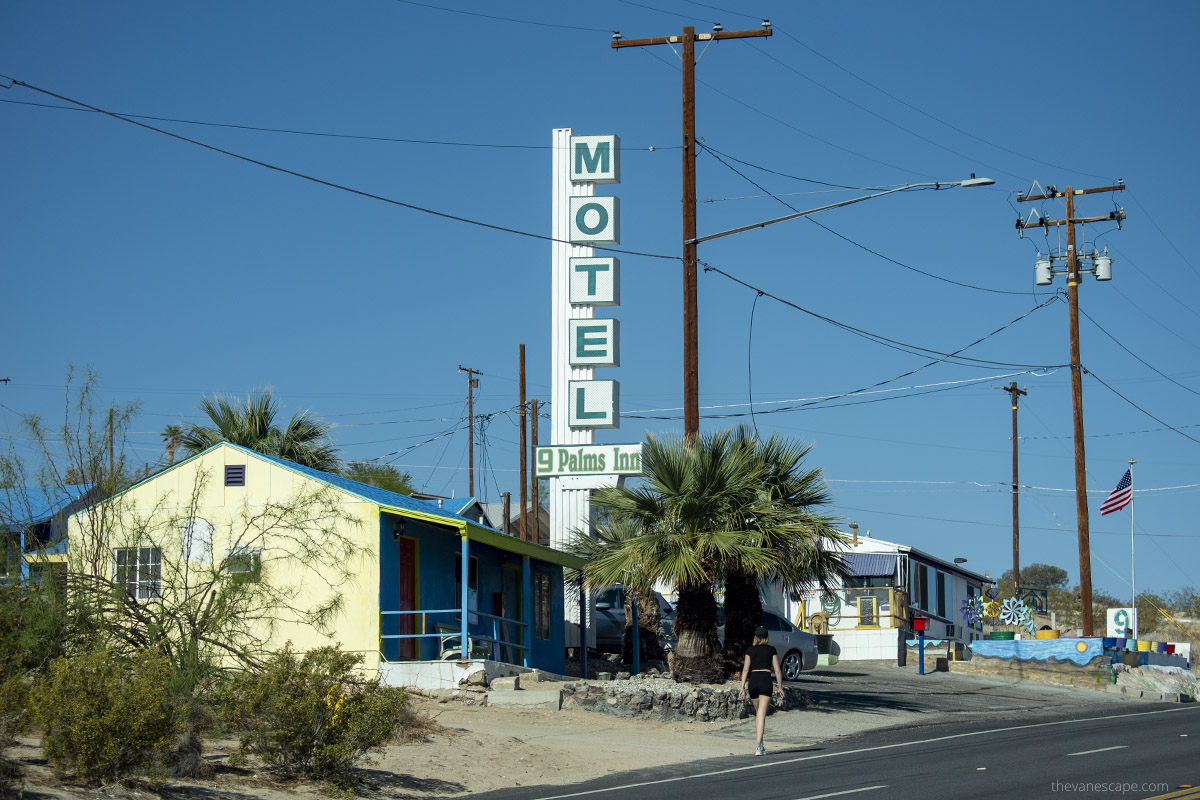
Where to Eat Near Joshua Tree
While Joshua Tree National Park doesn’t have any restaurants or food services inside the park, there are plenty of great options just outside in the nearby towns of Joshua Tree and Twentynine Palms. Whether you’re looking for a quick bite or a sit-down meal, here are some of the best places to eat near Joshua Tree.
In Joshua Tree Town
- Crossroads Café: A local favorite, this café offers a mix of healthy, organic dishes like sandwiches, salads, and breakfast options. It’s the perfect spot to grab a hearty meal before heading into the park.
- Joshua Tree Coffee Company: Known for its small-batch roasted coffee, this is a great place to pick up a strong brew or snack before a day of hiking.
- La Copine: Located just outside of Joshua Tree in nearby Flamingo Heights, La Copine serves elevated comfort food with a modern twist. Popular for brunch and lunch, it’s worth the short drive for dishes like their fried chicken sandwich or Moroccan-spiced lentils.
Twentynine Palms
- Kitchen in the Desert: A trendy, modern eatery with a focus on fresh, seasonal ingredients. You’ll find creative takes on American classics like tacos, burgers, and sandwiches, perfect after a long day in the park.
- The 29 Palms Inn: Located in Twentynine Palms, this charming inn serves locally sourced food with an emphasis on organic and seasonal ingredients. Their menu changes frequently, and it’s a great spot for a more relaxed, sit-down dinner after a day of exploring.
In Pioneertown
- Pappy & Harriet’s Pioneertown Palace: This iconic spot is located in the Old West town of Pioneertown, just a short drive from Joshua Tree. Known for its live music and laid-back atmosphere, Pappy & Harriet’s serves up classic American fare like burgers, steaks, and ribs. It’s a must-visit for both its food and its historic charm.
Quick Bites and Groceries
- Joshua Tree Farmers Market: Held every Saturday morning in Joshua Tree Town, the farmers market is a great place to pick up fresh produce, baked goods, and local treats to take with you into the park.
- Joshua Tree Health Foods: If you’re looking for organic snacks, fresh produce, or packed lunches to bring into the park, this local health food store has everything you need.
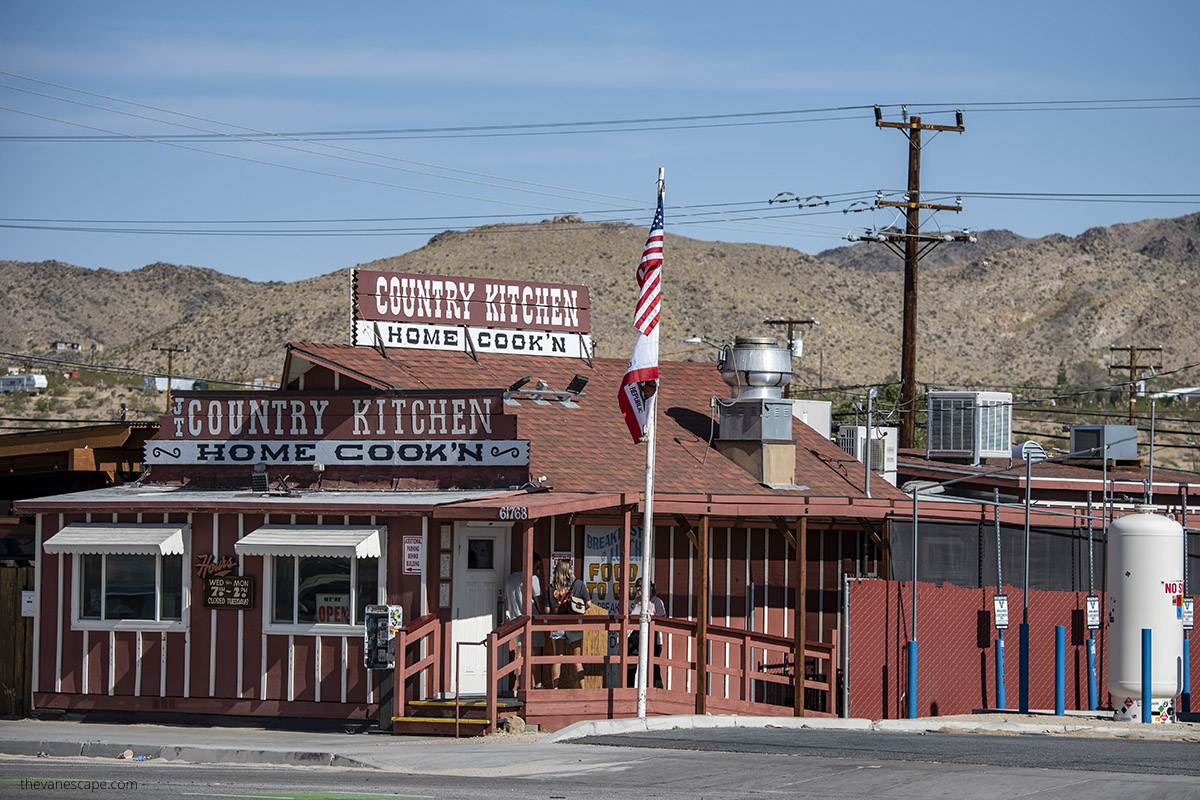
Visiting Joshua Tree National Park: Final Thoughts
Joshua Tree National Park is an incredible place, but since it’s a desert, preparation is essential for a successful visit. The harsh desert environment, with its extreme temperatures and limited resources, requires you to plan ahead. From packing enough water and sun protection to knowing the best times to visit, being well-prepared allows you to fully enjoy everything the park has to offer.
Whether you’re hiking, camping, or simply exploring by car, having the right gear and knowledge ensures a safe and memorable experience. Joshua Tree’s beauty is unmatched, and with the right preparation, your adventure will be unforgettable.
Do You Like It? Pin It For Later!
